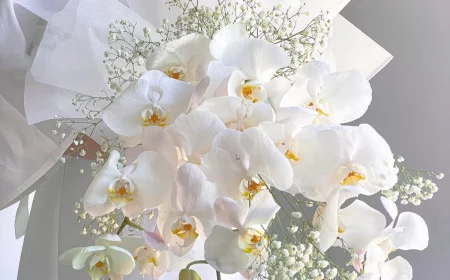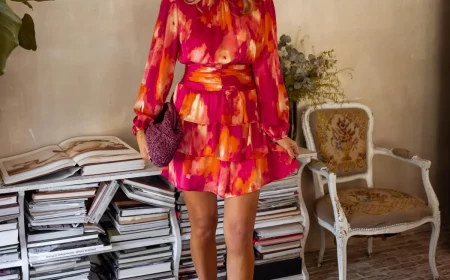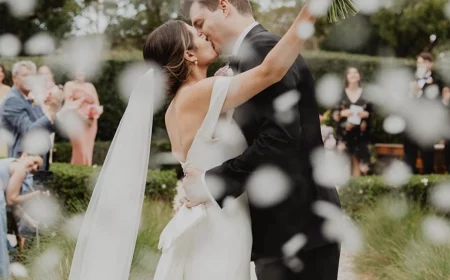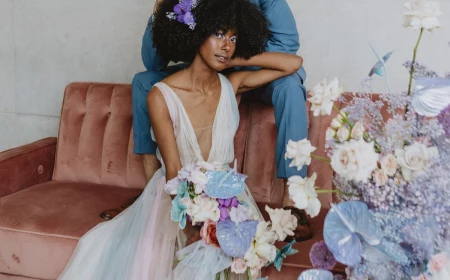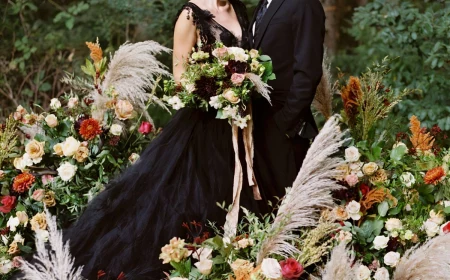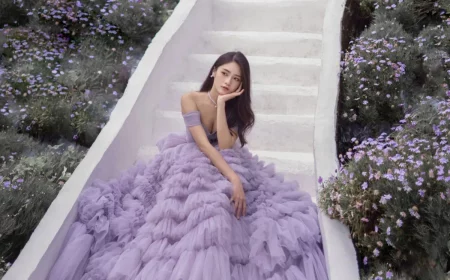Thinking of a Vintage Wedding Dress? Read This First (An Honest Guide)
For more than thirty years, I’ve worked with vintage wedding gowns. It’s more than just a job; it’s about connecting with these beautiful, fragile pieces of history. I’ve held delicate beading from the flapper era in my hands and restructured the elegant, firm bodices of mid-century gowns. Honestly, the romance of wearing a dress from another time is powerful, and I totally get it.
In this article
But with that romance comes some very real challenges. A lot of brides fall in love with the idea but aren’t quite prepared for the reality of it all.
My goal here is to give you the inside scoop. This isn’t about selling a fantasy; it’s about arming you with the knowledge to handle a genuine piece of textile history with the care it deserves. Wearing a vintage dress is a special kind of commitment. It calls for patience, a realistic budget, and almost always, a specialist’s touch. Let’s walk through what that truly means.
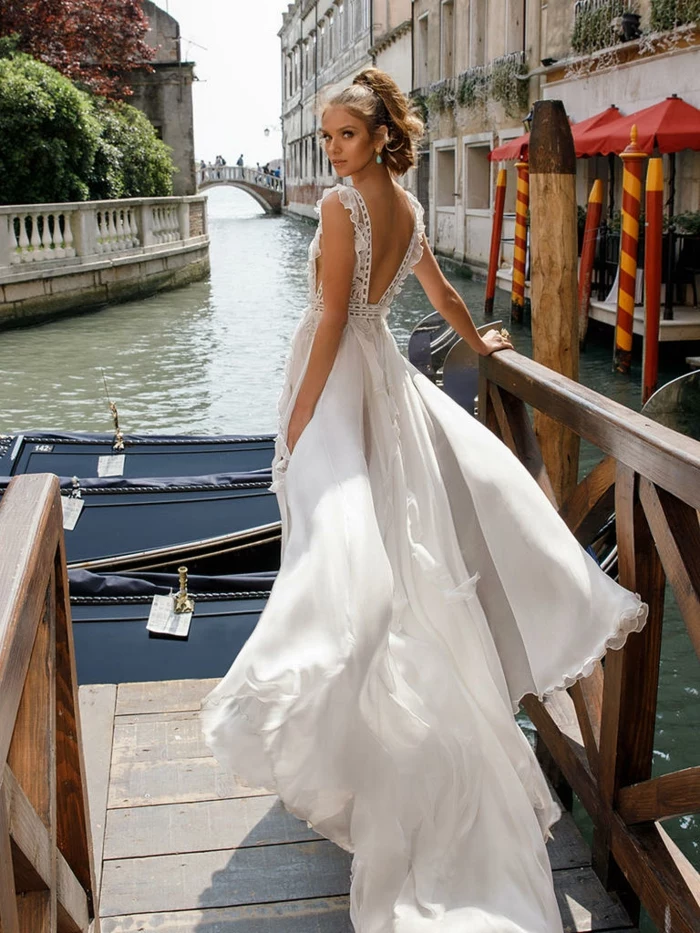
First Things First: True Vintage vs. Vintage-Inspired
Before we dive in, we need to get our terms straight. The market is flooded with confusing labels, and knowing the difference is your first line of defense against disappointment.
- True Vintage: This is the real deal—an original dress made and often worn in a past era. These gowns have authentic history woven into their threads. They were built with the techniques and materials of their time, which is where the magic, and the potential problems, lie.
- Vintage-Inspired: This is a brand-new dress, made today, but designed to look like it’s from another decade. These give you that gorgeous aesthetic without the fragility of an older garment. They’re made with modern fabrics, which makes them way easier to alter and care for. If you love a certain look but are worried about durability, this is a fantastic, practical choice.
- Heirloom: This is a specific type of true vintage gown—one that’s been passed down through your own family. It carries enormous sentimental value, but it also comes with all the same concerns as any other true vintage piece.
For the rest of this guide, we’re going to be talking about true vintage gowns, because they’re the ones that require some serious know-how.
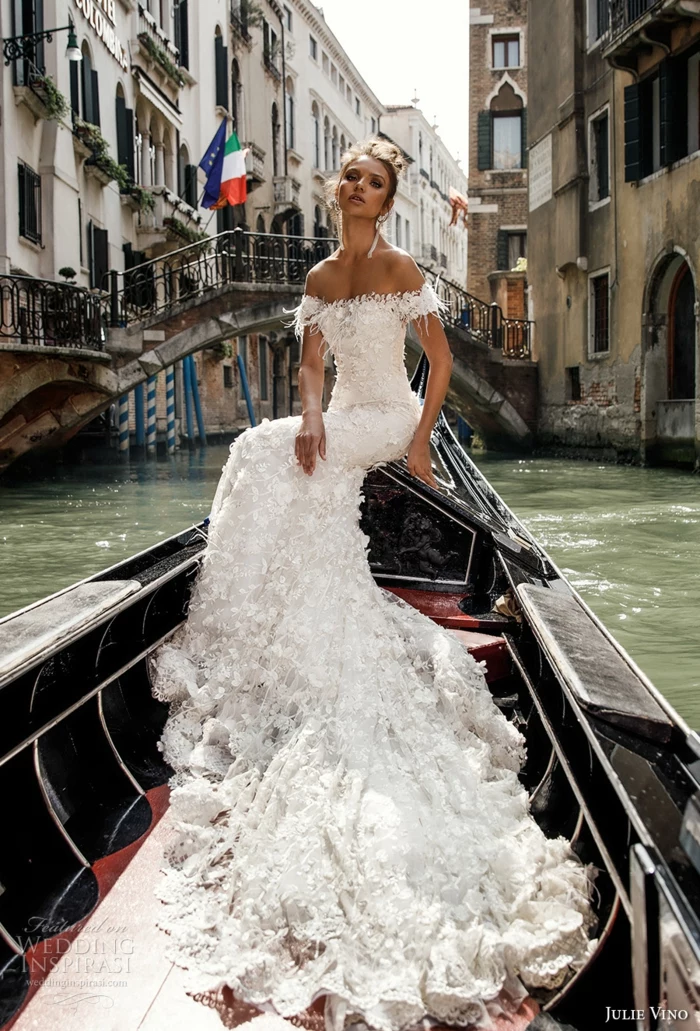
Getting to Know Your Dress: Fabric & Construction
You can’t really understand a vintage dress until you understand its materials. The way a fabric feels, drapes, and holds up over time tells a story. And frankly, this is more important than the style because it dictates everything—from cleaning to alterations to whether you can dance all night in it.
The Story of Old Fibers
Before the mid-century boom in synthetics, wedding dresses were almost always made from natural fibers. Silk was the gold standard, and you’ll see it in different forms like satin, charmeuse, and crepe. Each one has its quirks. For instance, the silk charmeuse popular for sleek, glamorous gowns is feather-light and drapes like a dream, but it’s also famous for snagging and showing water spots.
On the other hand, the heavy silk satin used for structured, full-skirted gowns can become brittle with age, a heartbreaking condition experts call “silk shatter.”
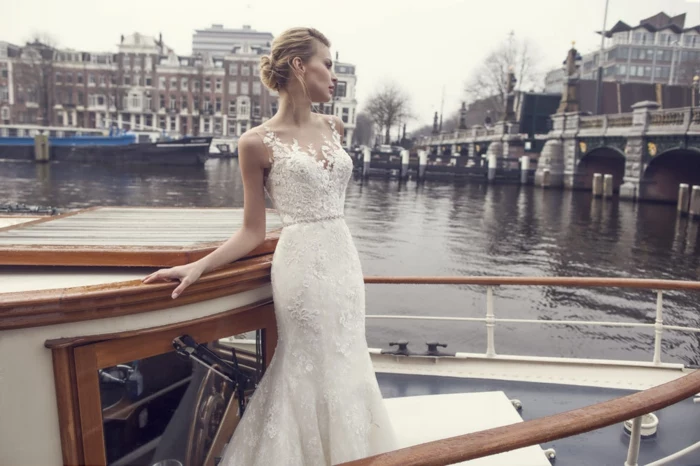
Rayon became a popular alternative during periods of wartime rationing when silk was scarce. It was even marketed as “artificial silk.” It has a lovely drape but gets incredibly weak when it’s wet. I’ve seen rayon dresses literally disintegrate during a bad cleaning job. Cotton was also a staple, especially for more casual daytime weddings, appearing as crisp organdy or fine lawn lace.
After those leaner years, synthetics like nylon and polyester entered the scene. Nylon tulle gave us those iconic, voluminous skirts, while polyester satin offered a similar look to silk but with more durability and a friendlier price tag.
Quick Tip: A pro can often identify a fabric by performing a burn test on a tiny, hidden thread from a seam allowance. Silk smells like burning hair, natural fibers like cotton and rayon smell like burning paper, and synthetics melt into a hard little bead.
How It Was Made Matters
The construction of a dress tells you so much. Older gowns often have tiny seam allowances—sometimes just a quarter of an inch—to conserve fabric. This also means there’s very little, if any, room to let the dress out. This is a tough lesson for many brides who buy a gown that’s just a little too snug.
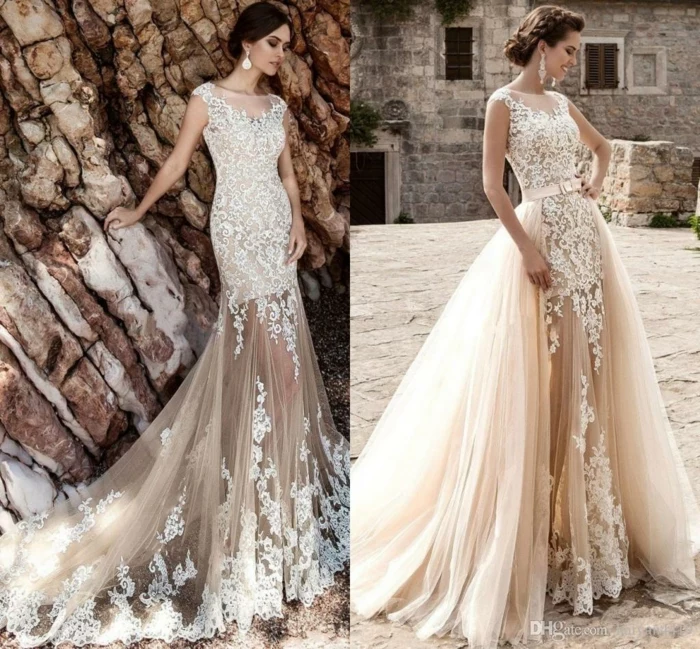
Look at the closures, too. Metal zippers from certain classic brands can help place a dress in a general timeframe, from the thirties to the early sixties, while nylon zippers became common after that. If you see a modern plastic zipper on a dress that claims to be from the forties, it’s likely a replacement. That isn’t necessarily a bad thing, but it’s part of the garment’s journey.
A Walk Through the Styles
Each era had its own signature shape. Knowing these general silhouettes helps you spot a true vintage piece and appreciate what makes it special.
- The Twenties & Thirties: Grace and Fluidity. Think less of the heavily beaded flapper party dresses and more of a modest, straight, drop-waist silhouette. The real showstoppers from the thirties were the bias-cut gowns. Cutting fabric on a 45-degree angle creates a slinky, body-hugging drape that is unbelievably elegant but also fragile. The seams are under constant tension. Heads up: A fabric treatment using metallic salts was common then to give silk more weight. Over time, these salts can cause the fabric to shred, making a dress too delicate to even wear.
- The Forties: Wartime Simplicity. Fabric rationing during the major global conflict of the mid-20th century led to simpler, more practical wedding dresses. The common look was strong, padded shoulders, a defined waist, and a slimmer A-line skirt, often made of rayon crepe. They represent a quiet, resilient elegance.
- The Fifties: The Return of Glamour. The post-war era brought back opulence! This is the decade of the classic princess gown: a tight bodice, a tiny waist, and a huge, full skirt made of heavy satin, taffeta, or lace. These gowns are often built like architecture, with internal boning and layers of netting. Because of their robust construction, they’re often a great choice for a bride who wants a durable vintage piece.
- The Sixties: A Decade of Change. This was a transitional time. Early in the decade, structured silhouettes were still in, but by the mid-sixties, an empire waist with a straight, column-like skirt became the modern look. Hemlines rose, and fabrics got simpler.
- The Seventies: Bohemian and Free-Spirited. This era was all about a softer, more romantic vibe. Flowing silhouettes, high necks, and long bishop sleeves were everywhere. A popular brand known for its beautiful prairie-style dresses really defined this look, using fabrics like cotton lawn, Swiss dot, and crochet-style lace.
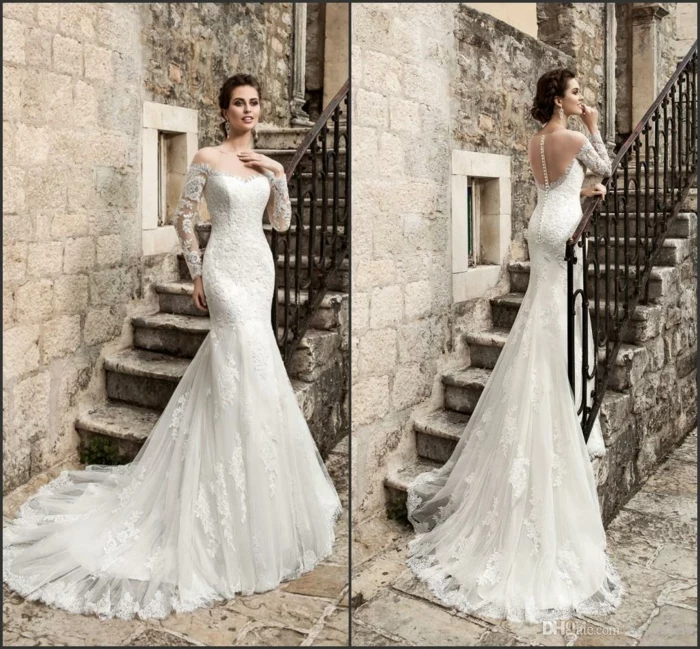
The Hunt: Finding and Inspecting Your Gown
Finding a true vintage gown is a treasure hunt. You might score one at a specialized boutique, an online shop, an estate sale, or even in Grandma’s attic. No matter where you find it, a thorough inspection is non-negotiable.
Your Vintage Hunting Toolkit
Before you even step out the door for an appointment, get your kit ready. Seriously, this makes a huge difference. Bring:
- A flexible tape measure
- A list of your own measurements
- A pair of white cotton gloves (to handle delicate fabrics without transferring oils)
- Your phone’s flashlight for up-close inspection
The Inspection Checklist
When I assess a dress, I’m like a detective. You should be, too.
- Stain Check: Use bright, natural light. Pay special attention to the underarms, where acidic perspiration can cause permanent yellowing and weaken fabric. Check the hem for dirt and the front of the skirt for old food or drink spills.
- Fabric Strength Test: Gently—and I mean GENTLY—pinch a bit of fabric in a hidden spot, like a deep seam allowance. Give it a tiny tug. If it feels crisp or makes a faint tearing sound, the fabric is likely brittle. This is a major red flag, especially with older silks.
- Seam Examination: Look for pulls, splits, or stressed areas. The shoulders, waist, and underarms are the usual suspects. Are the threads themselves intact? Old cotton or silk thread can get brittle and snap.
- Beading and Closures: Are all the buttons, snaps, and hooks there? How does the beadwork look? Sometimes the thread holding it all together has rotted away. Replacing intricate beadwork is a highly specialized and expensive job.
- The Smell Test: A little dustiness is normal and can be aired out. A strong, musty smell of mildew? That’s a huge problem. Mildew can eat away at fabric and the smell is nearly impossible to eliminate. I’d walk away from a mildewy dress.
A quick word on buying online: It’s risky. Photos can hide a multitude of sins. If you must go this route, demand detailed photos of the problem areas I listed. Ask the seller to describe any smells and to be brutally honest about the fabric’s condition.
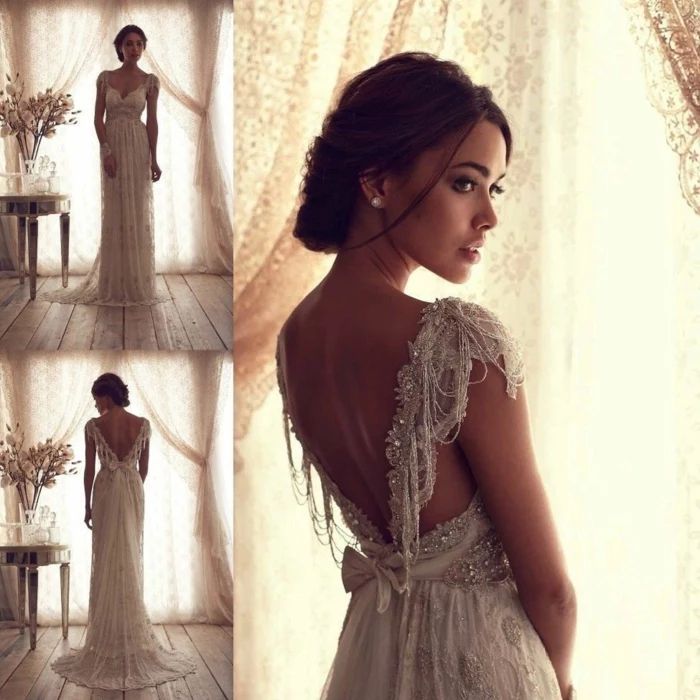
The Reality: Restoration, Timelines, and Cost
Almost every vintage gown needs some work. This is where the budget and timeline can surprise people. You don’t just need a seamstress; you need a specialist with hands-on experience in vintage textiles.
Finding the Right Pro
Don’t just go to your local dry cleaner or alterations shop. You need to vet them. Ask directly: “How many true vintage wedding gowns have you worked on?” Ask for a portfolio. You can also search online for a “textile conservator near me” or an “heirloom gown specialist.” Sometimes, local historical societies or even university theater departments can offer fantastic recommendations.
The Real Talk on Budgeting
Okay, let’s talk numbers. The initial price of the dress is just the starting point. I always tell brides to budget at least twice the purchase price for the after-care.
Here’s a realistic breakdown of what you might face:
- The Dress Itself: Anywhere from $400 to $2,000+, depending on rarity and condition.
- Specialist Cleaning: This is a delicate process and can range from $250 to $700. Standard dry cleaning is a huge no-no; their harsh chemicals can destroy old fibers.
- Restoration & Alterations: This is the big variable. Sizing down is usually doable. Sizing up is tough. My team once inserted beautiful, hand-beaded silk godets into the side seams of a sleek thirties gown to make it fit the bride. A creative solution like that can cost $500 to $1,500+. Another time, we had a gorgeous mid-century gown with a hopelessly stained skirt. The fix? We shortened it to a chic tea-length, removing the damage entirely. It was perfect for her less formal wedding!
Always get a detailed quote from a qualified specialist before you buy the dress, if possible.

Plan Your Timeline
From my experience, you need to give this process time. A LOT of time.
My best advice? Have the dress in your hands at least 9 to 12 months before your wedding. Finding the right specialist can take a month or two. The actual work—from assessment and cleaning to repairs and final fittings—can easily take another 4 to 6 months. Rushing this process is where mistakes happen.
Final Thoughts: Storage & Expectations
A vintage gown is not a modern one. A 90-year-old silk dress probably can’t handle a wild night of dancing. Be realistic. Some of my clients wear their fragile heirloom for the ceremony and photos, then change into a sturdier reception dress. It’s a great way to get the best of both worlds.
How to Store Your Gown
Before the wedding, keep it in a breathable garment bag (not plastic!) away from light and humidity. After the wedding, have it professionally cleaned again and preserved. This usually means storing it in an archival, acid-free box with acid-free tissue paper supporting all the folds. This prevents yellowing and fabric stress for years to come.
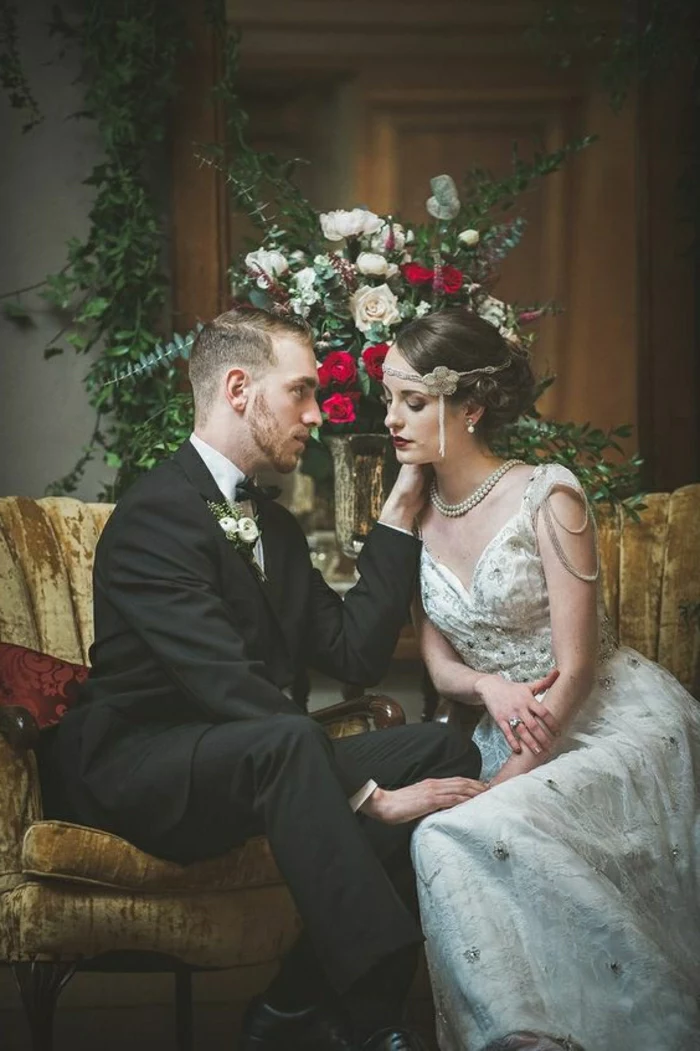
Wearing a vintage dress is a partnership. You become the temporary caretaker of a piece of history. If you approach it with knowledge, respect, and a realistic plan, you can make its story a beautiful part of your own.
…
P.S. Feeling inspired? Here’s a quick win for today: Hop onto a marketplace like Etsy or a specialty site like Gossamer. Search for a gown from your favorite era. Just browse. Look at the photos, read the descriptions, and see if you can spot the clues we talked about. It’s great practice and, let’s be honest, it’s a lot of fun!
Inspiration Gallery
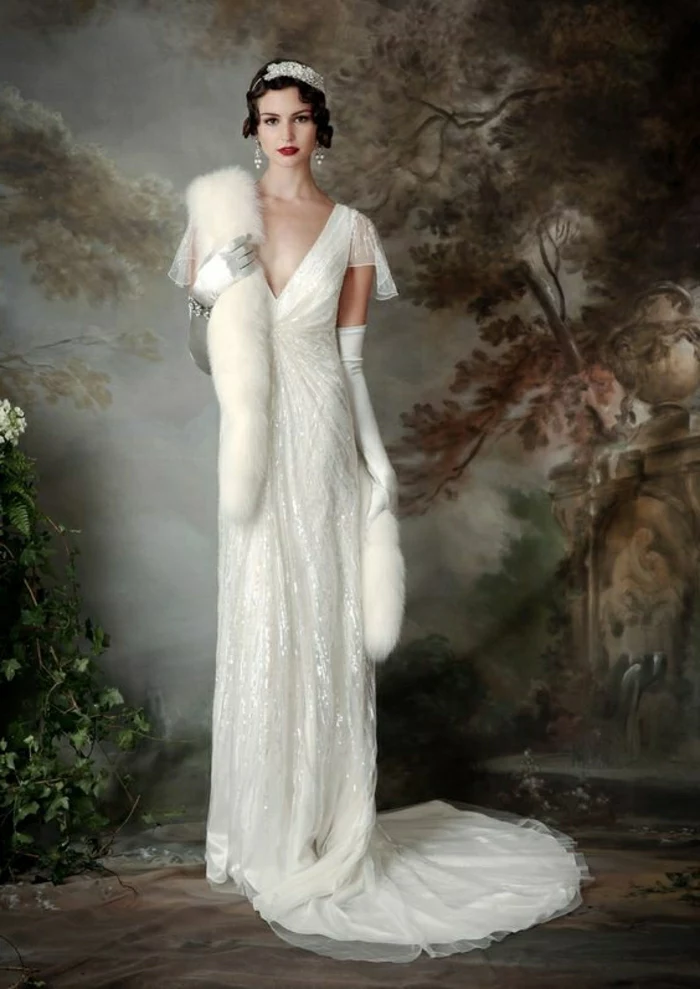
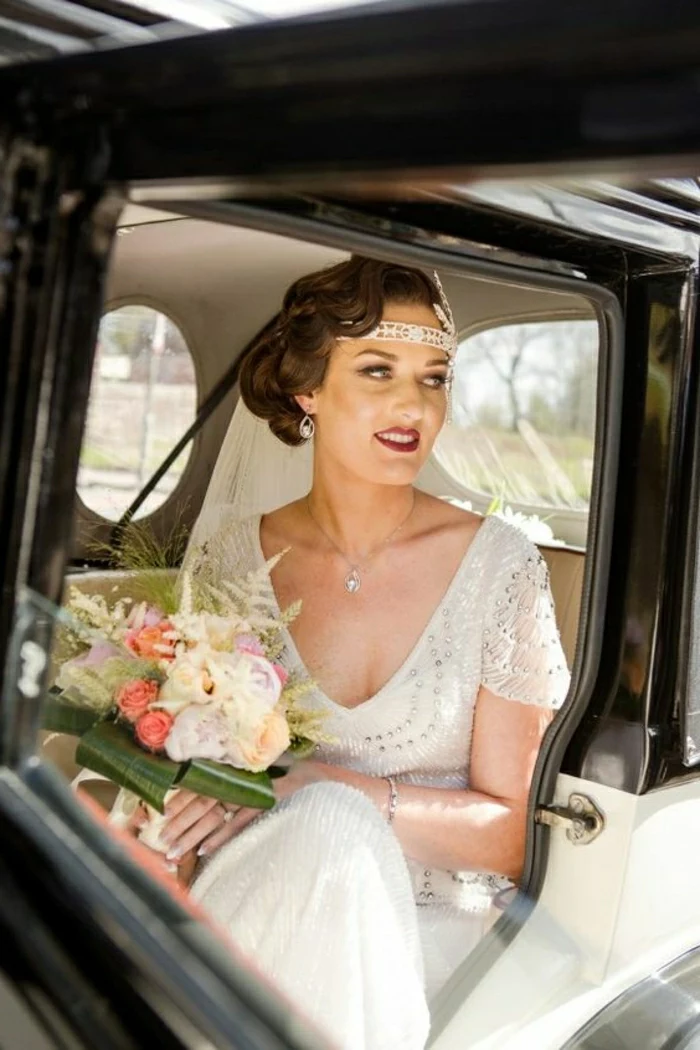
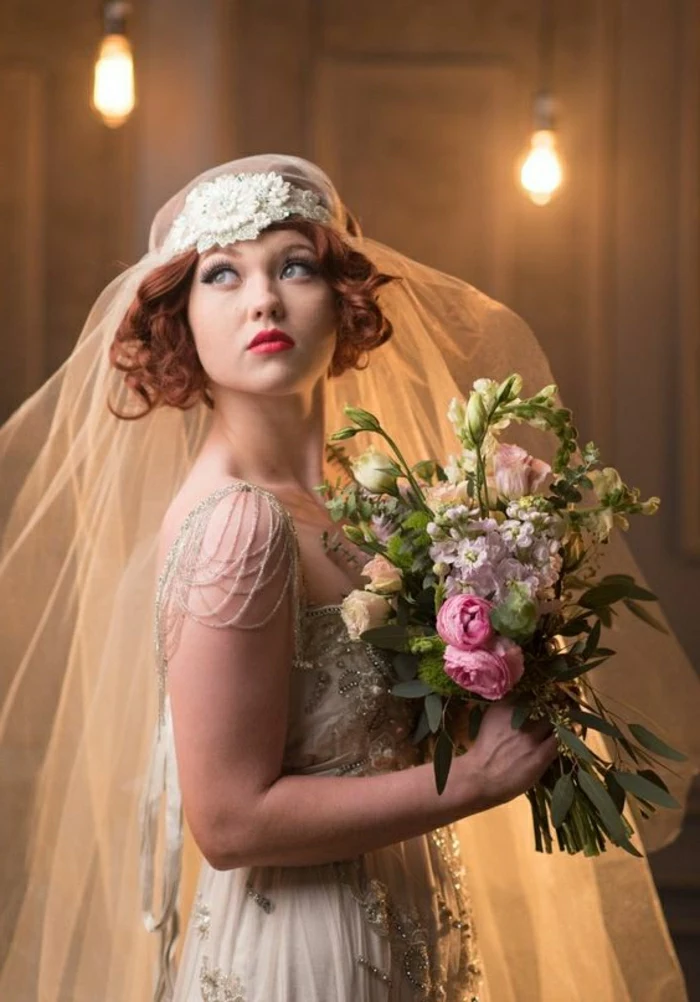
When you first handle a true vintage gown, pay attention to its scent. A slight, dry, almost papery smell is the scent of time itself and often harmless. However, a sharp, musty, or mildewy odor is a red flag, signaling improper storage and potential fabric decay that may be impossible to fully remedy, even for a professional.
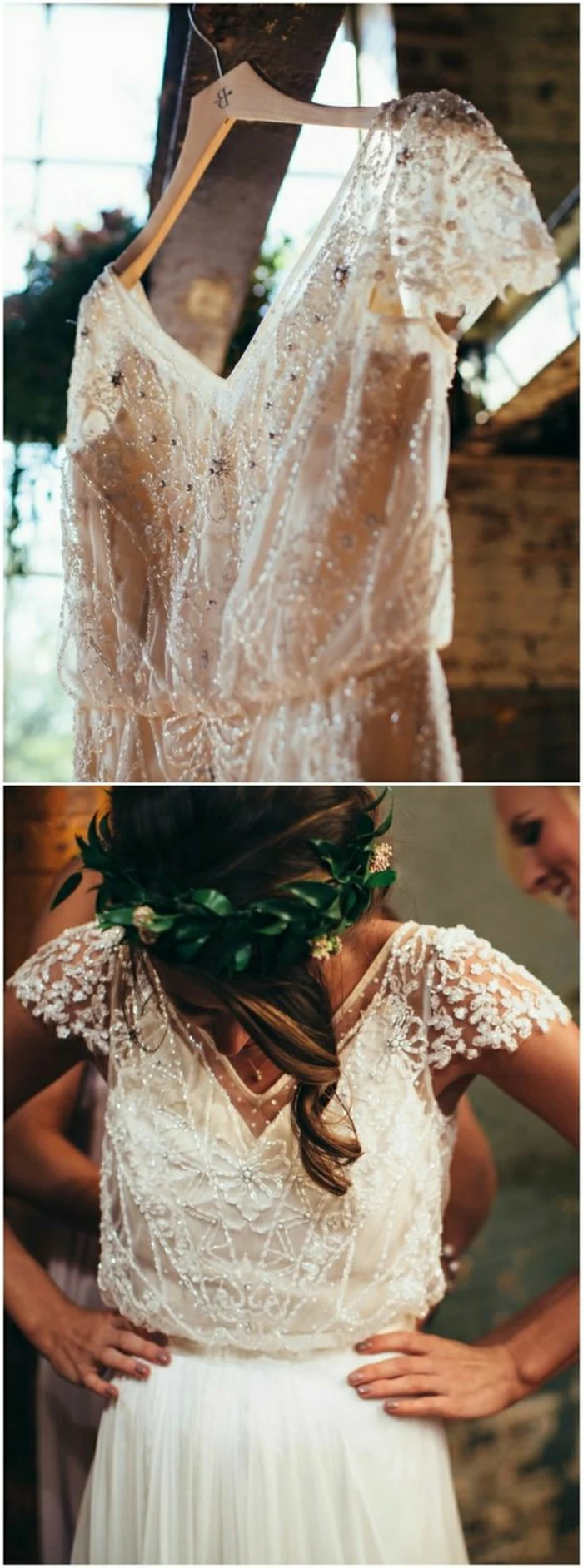
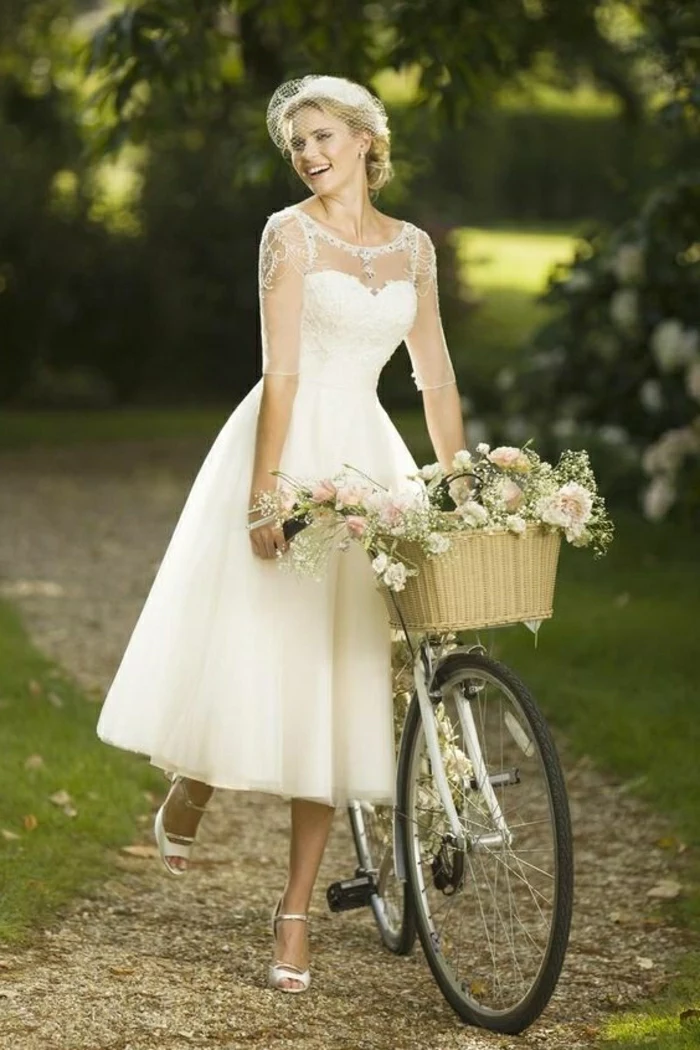
- Check for subtle discoloration, especially under the arms and along the hemline.
- Gently run your fingers over beading and sequins to test for loose threads.
- Examine the closures: Are the original buttons, hooks, or delicate zippers intact and functional?
- Hold the fabric up to a light source to spot tiny holes or areas of weakness, particularly in lace or silk.
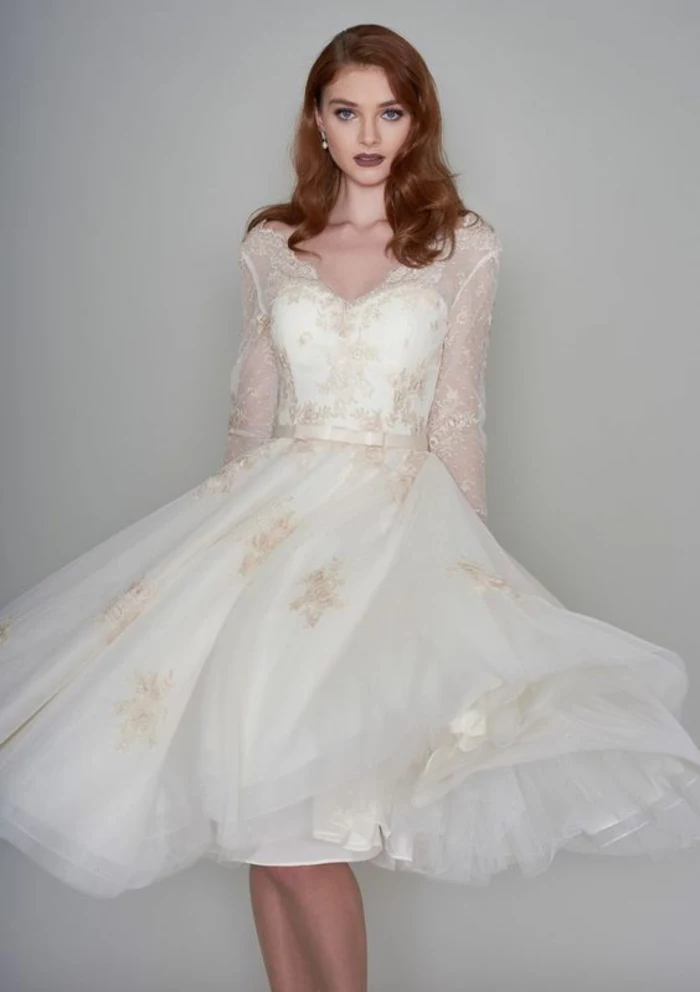
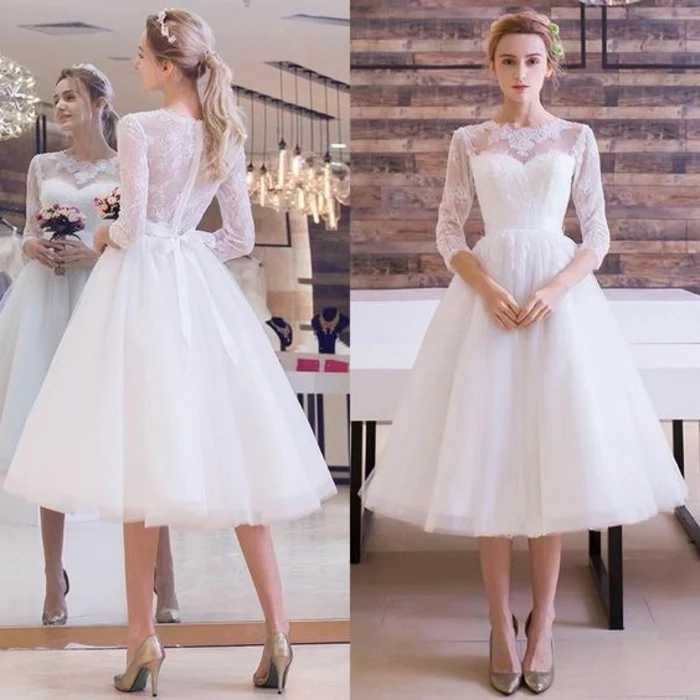
Your foundation garments are non-negotiable. A 1950s gown with a wasp waist was designed to be worn with a structured long-line bra or corselet. A 1930s bias-cut dress demands a simple, seamless slip to drape correctly. Buy your wedding-day undergarments *before* your first fitting; they are essential tools that dictate the entire fit and silhouette, not an afterthought.
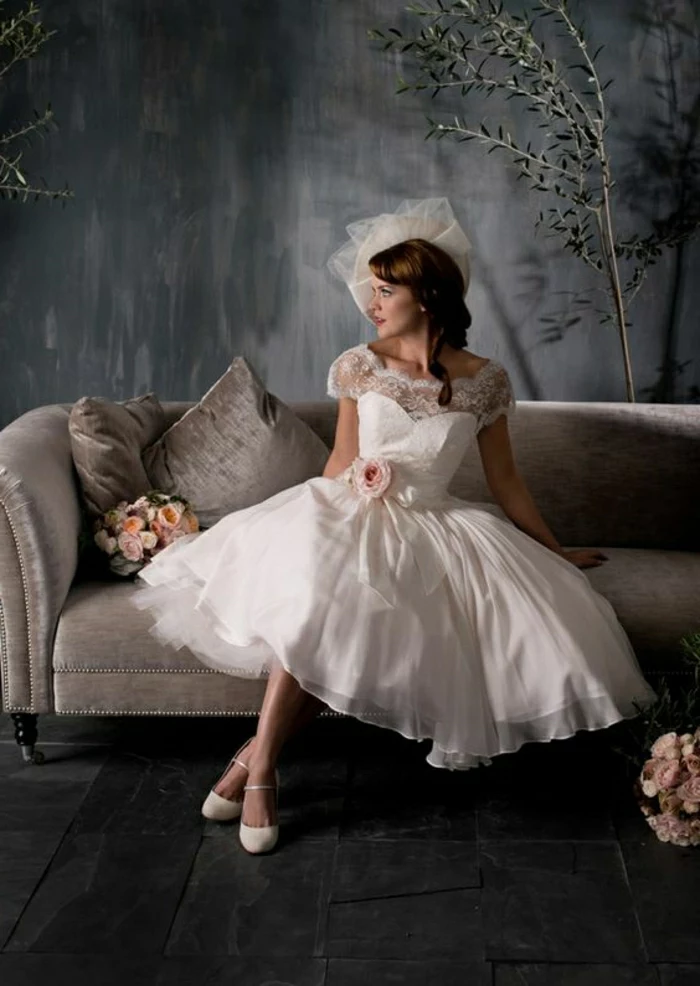
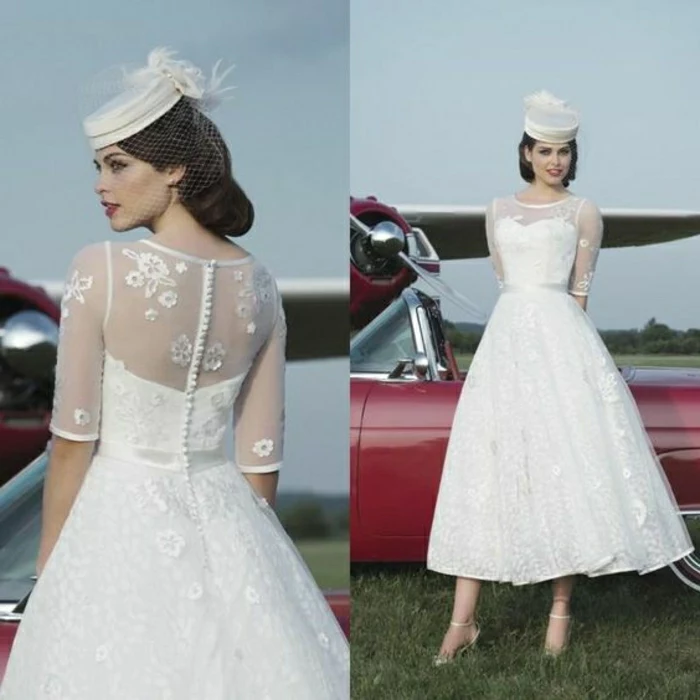
Did you know? Rayon, a popular fabric for wedding dresses from the 1930s and 40s, is significantly weaker when wet. Aggressive steam cleaning or washing can cause it to stretch, warp, or even tear.
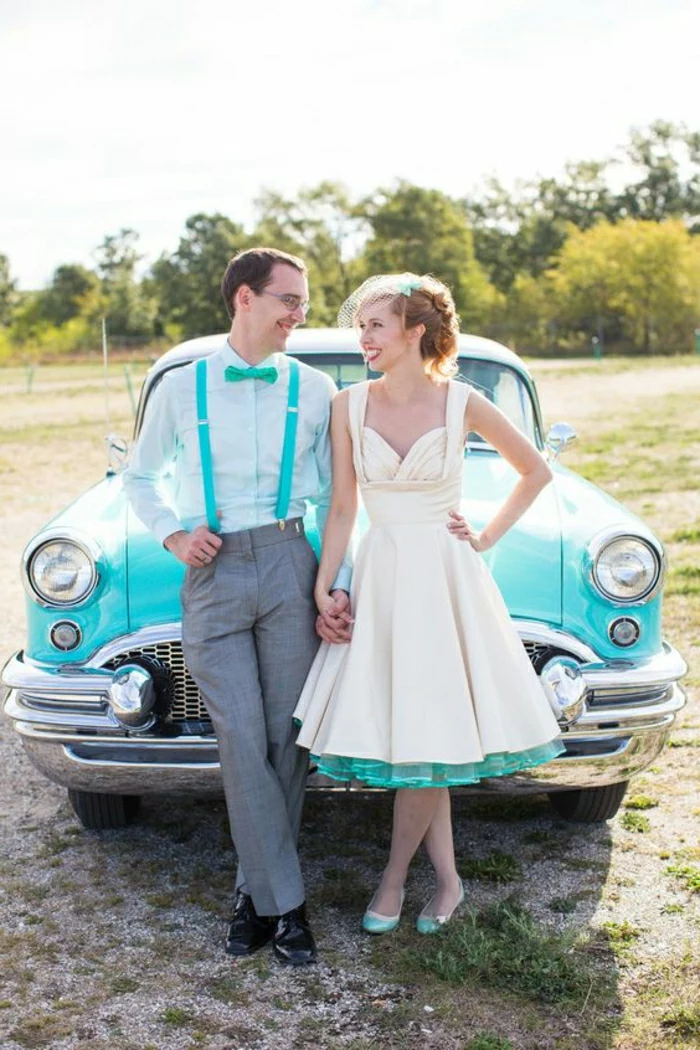
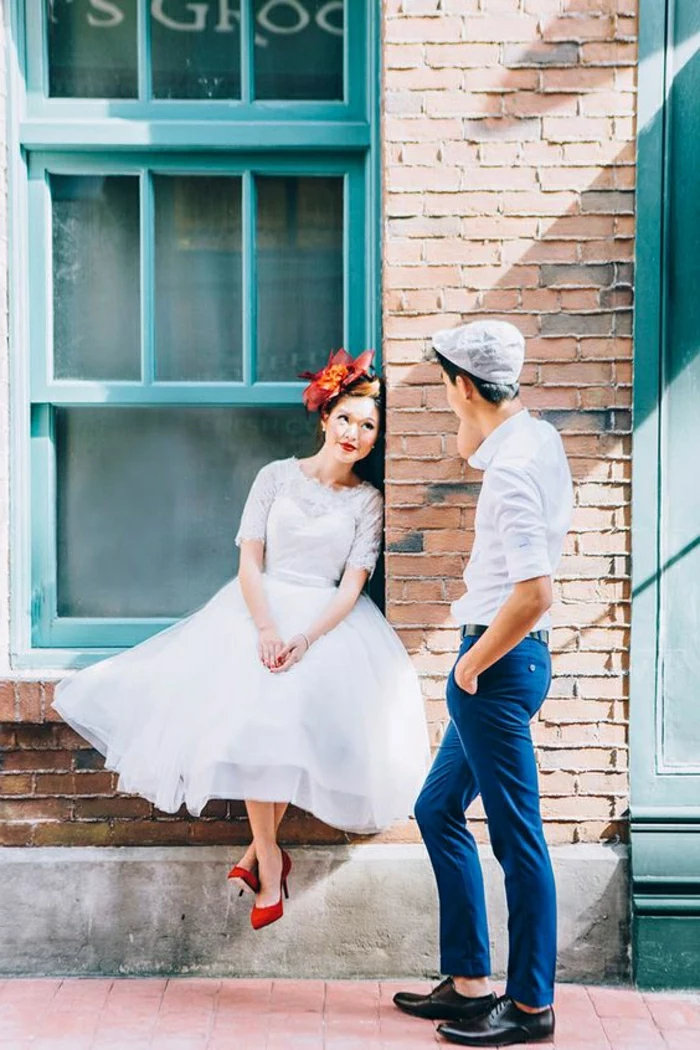
Is it possible to remove yellowing from an old family heirloom?
Those amber or yellow spots are typically caused by oxidation over decades. While modern, professional cleaning by a textile conservator can sometimes lighten them, complete removal is never guaranteed. The process is delicate and can be costly. It’s a journey of restoration, not a magic fix, so it’s crucial to have a consultation and set realistic expectations before committing to the dress.
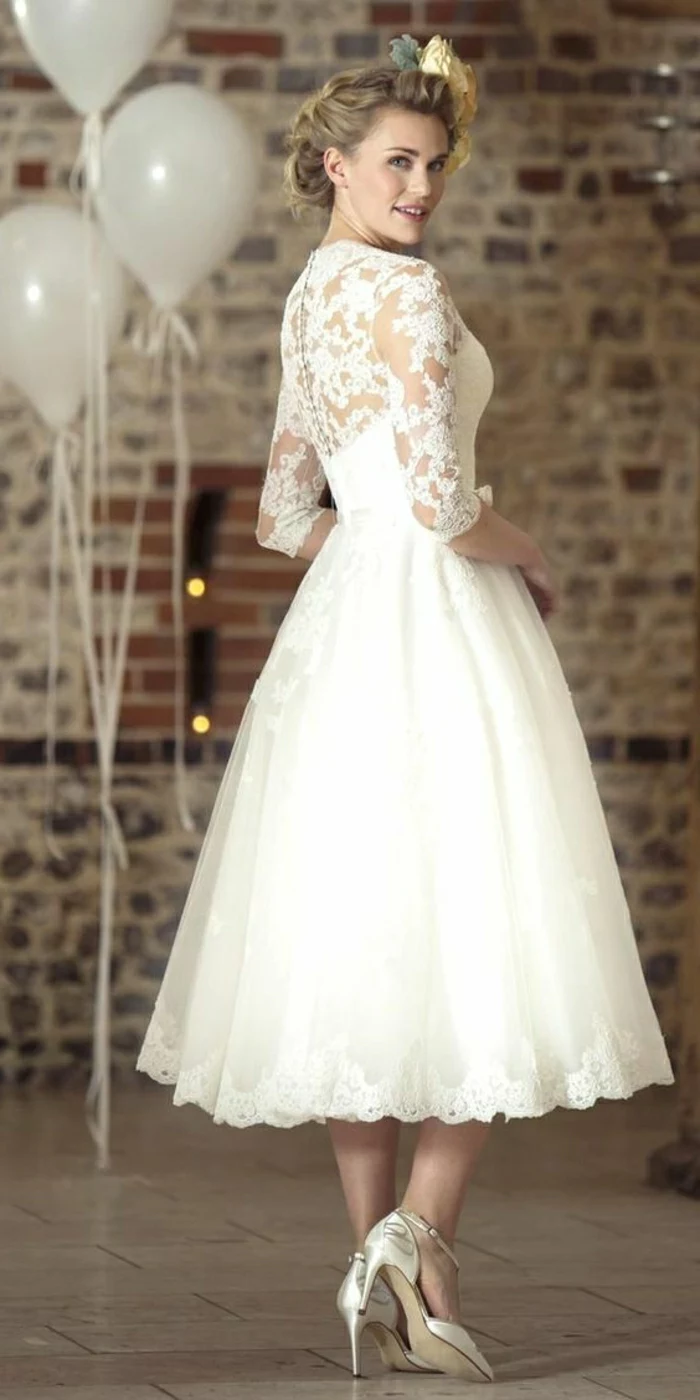
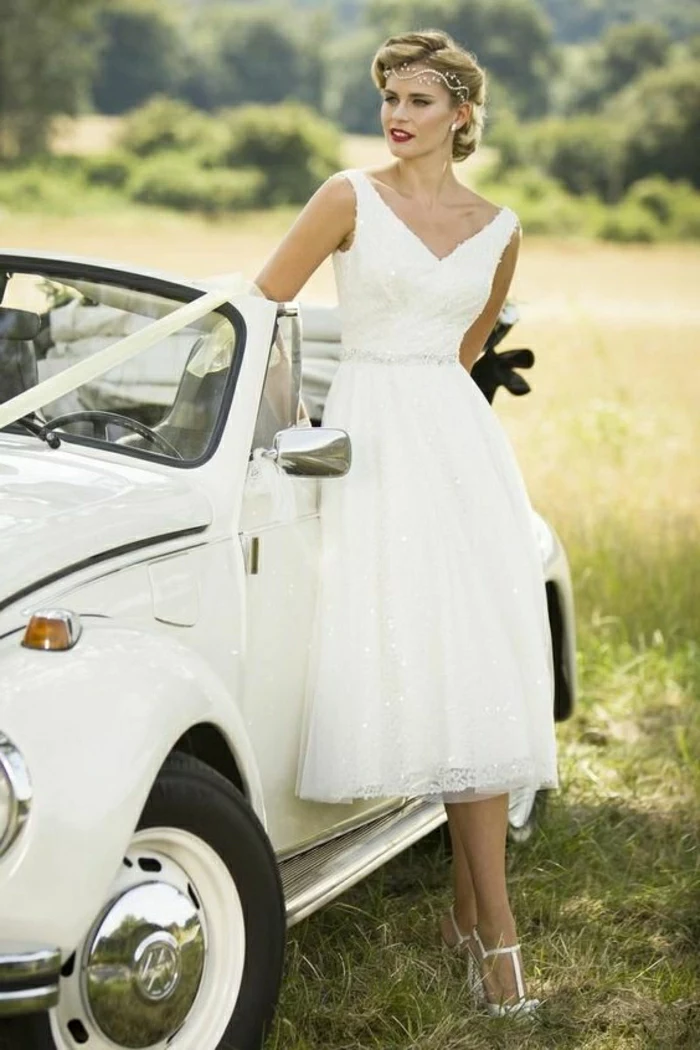
Finding a seamstress for a vintage gown requires more than a quick search for ‘tailor’. You need a specialist who understands period construction.
- Ask if they have experience with the specific fabric of your dress (e.g., silk charmeuse, rayon crepe).
- Inquire about their methods for handling fragile seams and beadwork.
- Request to see examples of their previous work on vintage or couture pieces.
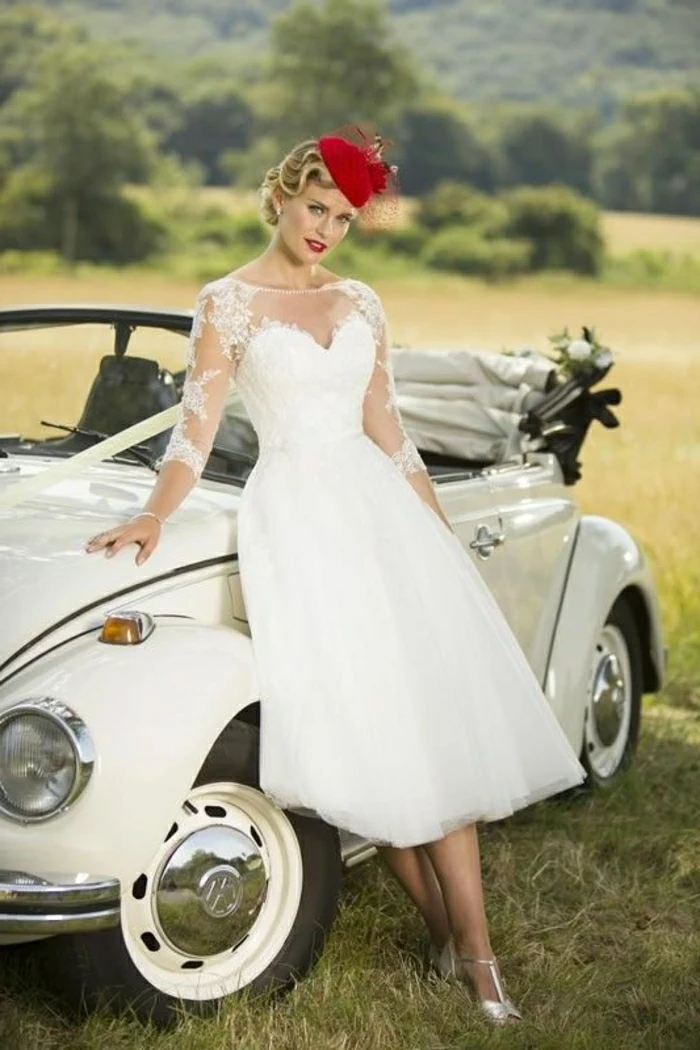
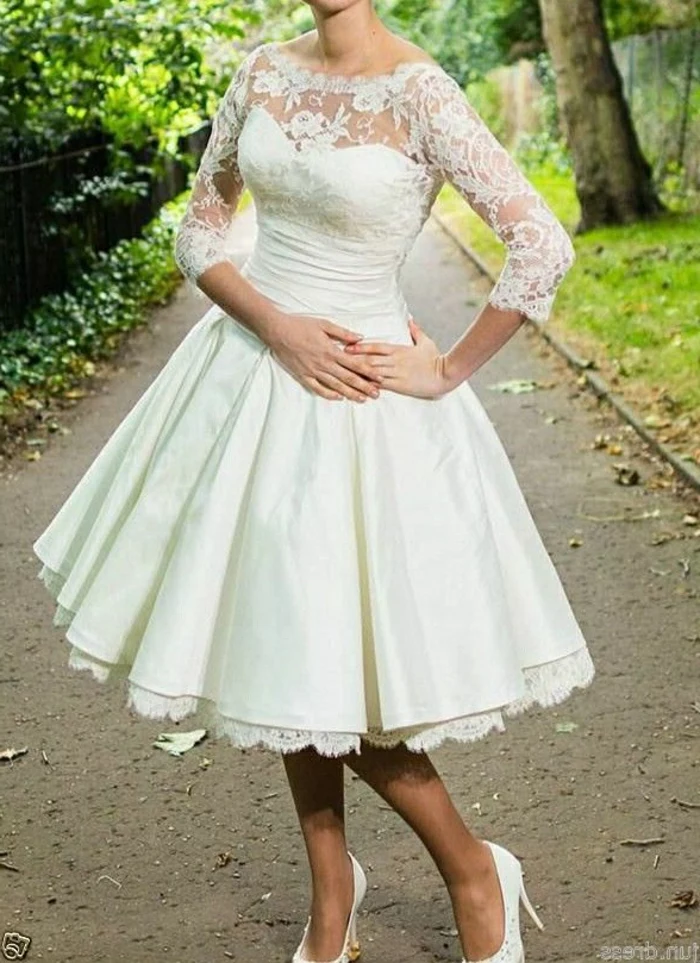
1920s Flapper Style: Expect delicate, often weighted silk and intricate glass beading. The silhouette is straight and boyish. These gowns are notoriously fragile and almost impossible to size up; they are best for brides who fit them nearly perfectly from the start.
1950s New Look Style: Characterized by structured bodices, tiny waists, and full skirts made from robust fabrics like taffeta, satin, or organza. These are generally easier to alter and more durable, offering a classic bridal look with dramatic flair.
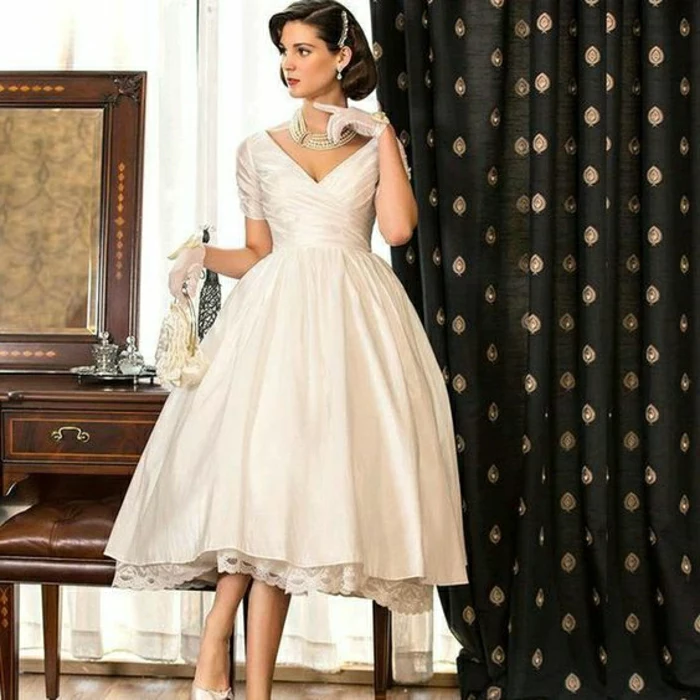
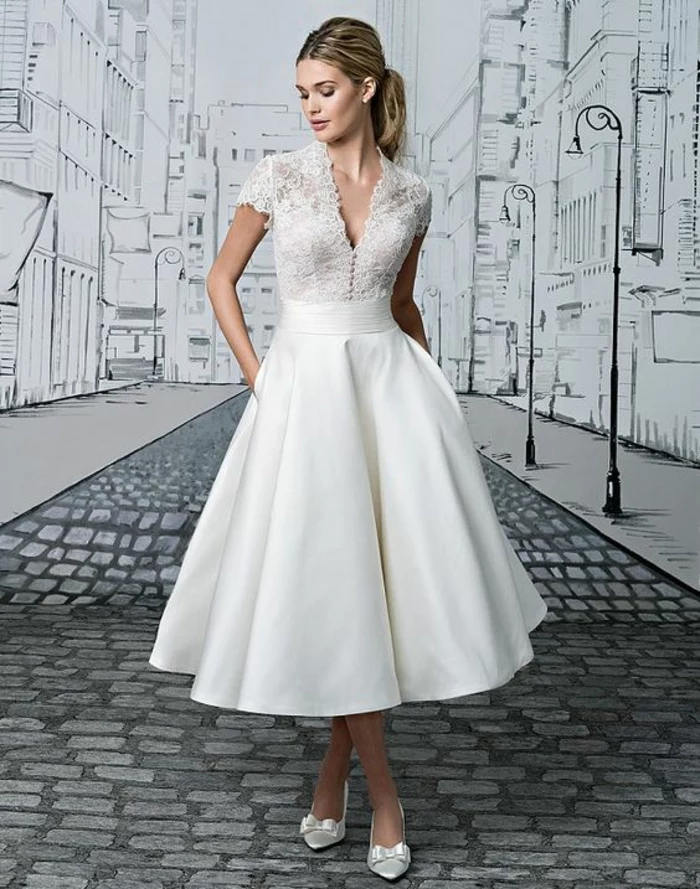
The unique story, the sustainable choice, the one-of-a-kind design.
The secret? A mindset shift. You aren’t just buying a dress; you’re becoming the custodian of a piece of history. Embrace its minor imperfections—a slightly faded patch, a replaced button—as part of its irreplaceable charm and narrative.
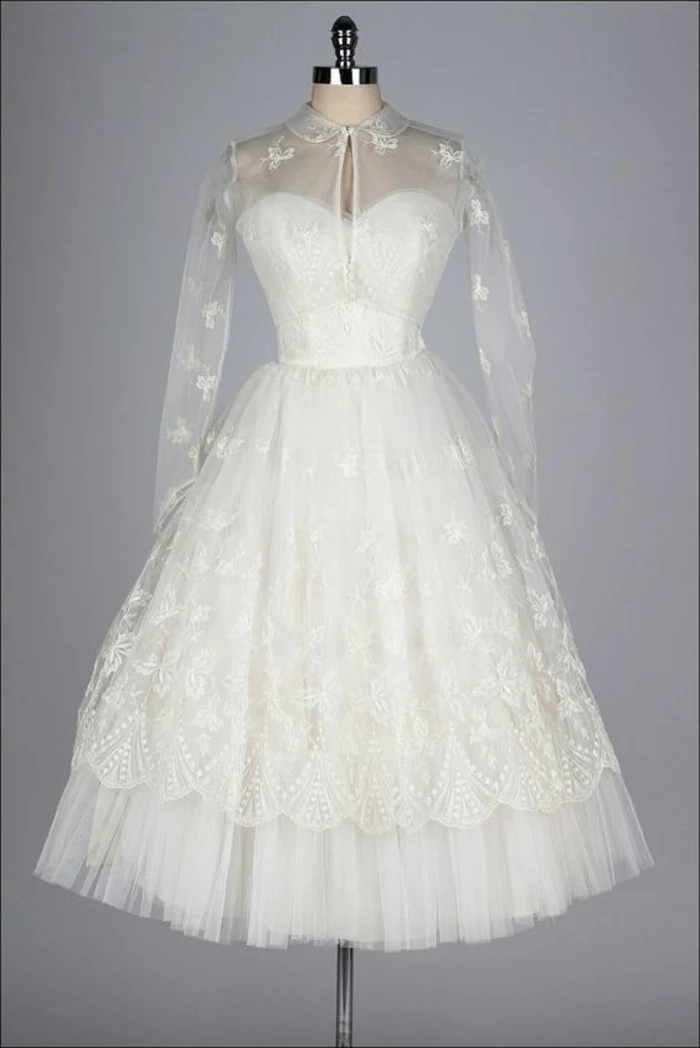
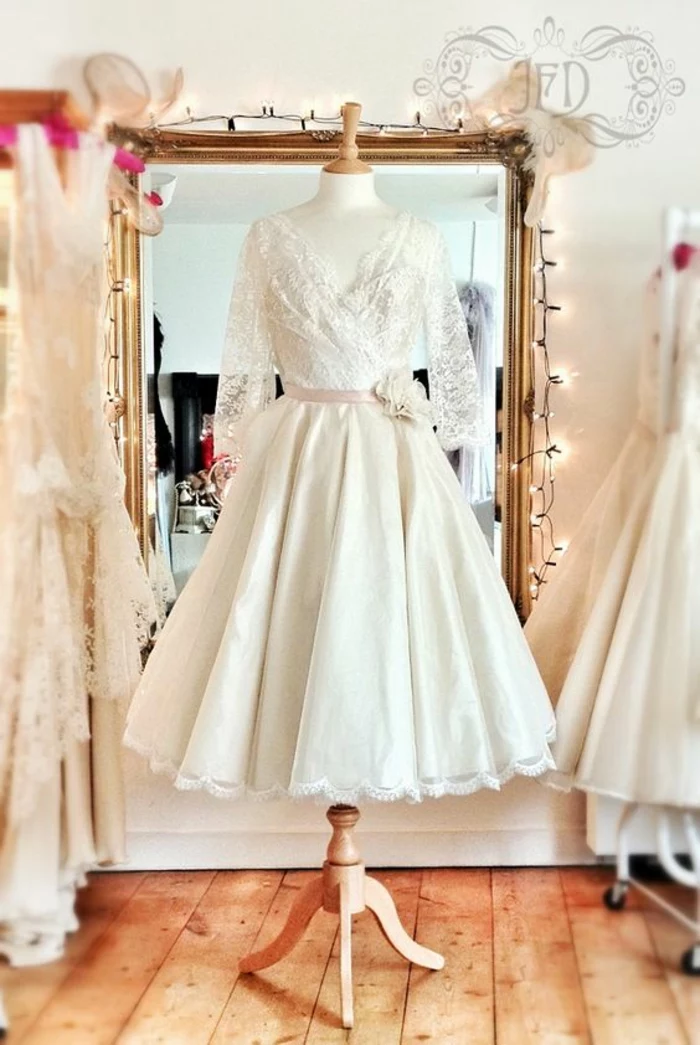
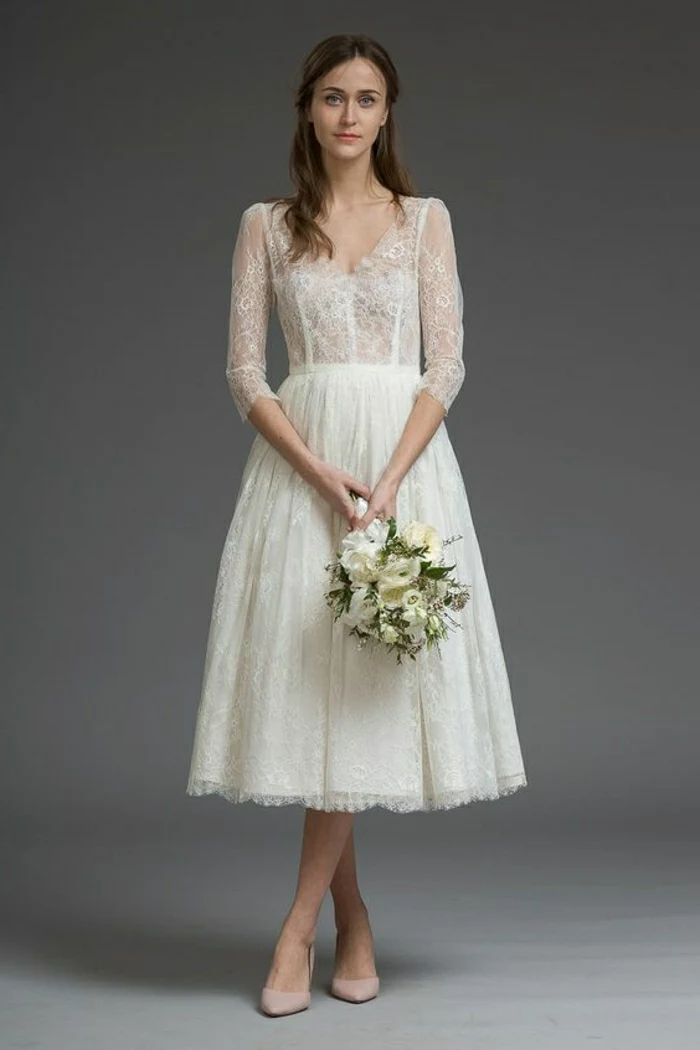
The average waist size for a woman in the 1950s was around 26 inches, compared to about 38 inches today.
This statistic is the single biggest reality check for vintage shoppers. Don’t be discouraged by sizing labels; they are completely irrelevant by today’s standards. Focus on measurements and always allow for the possibility that a dress simply cannot be altered to fit without compromising its integrity.
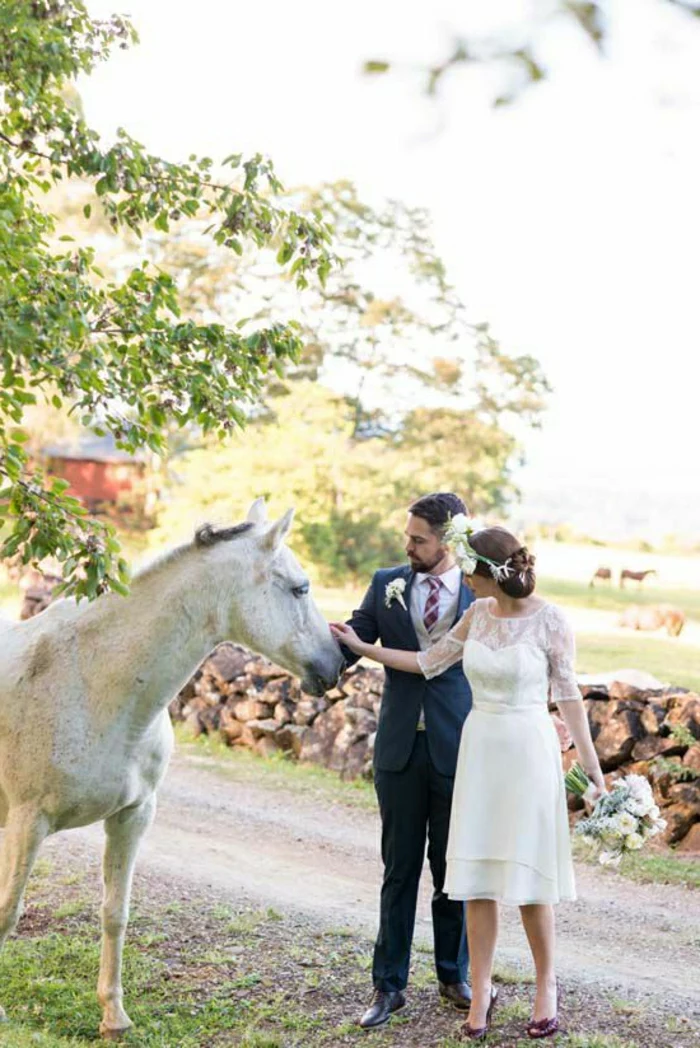
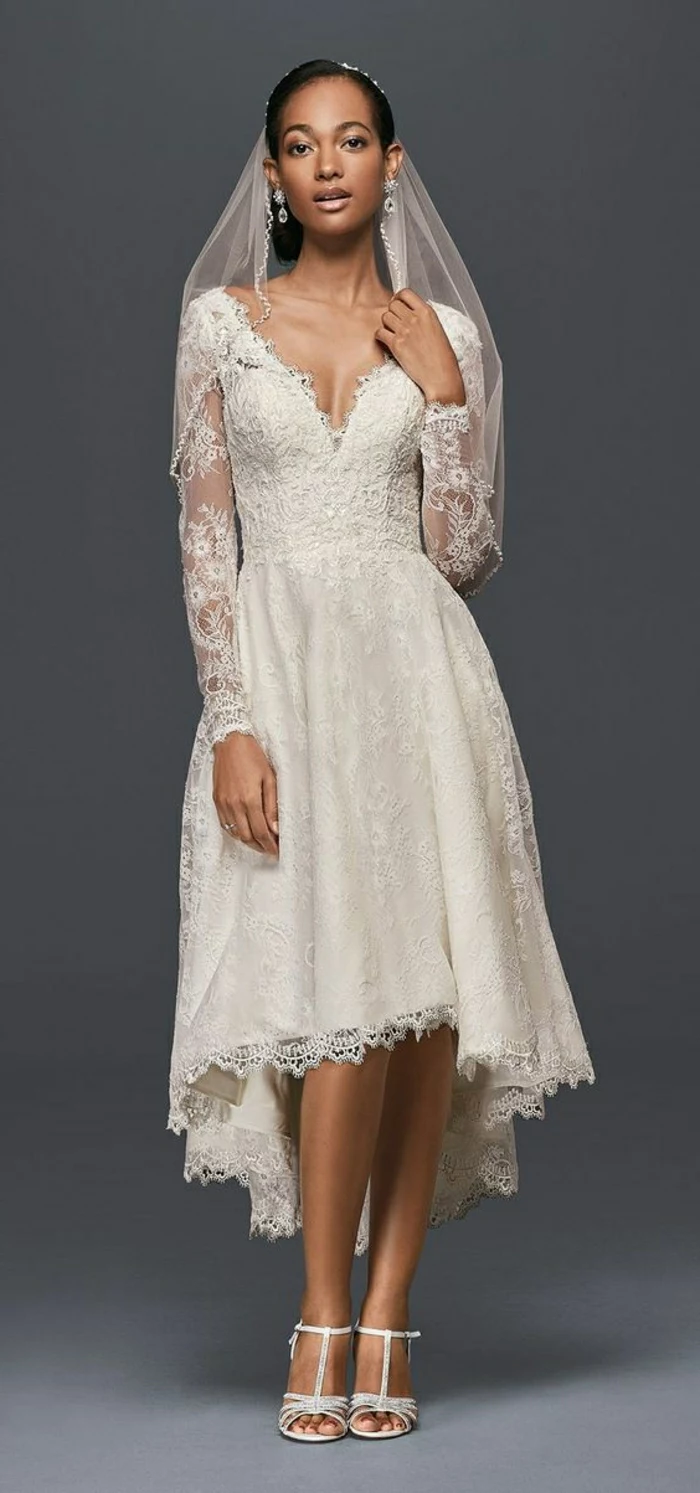
Don’t overlook the gowns of the 1970s. While the decade is known for polyester, high-end bridal fashion embraced a romantic, bohemian spirit. Look for designers like Gunne Sax with their prairie dresses, or gowns made from beautiful Swiss dot cotton, delicate eyelet lace, and bishop sleeves. They are often more comfortable and have a more relaxed fit than earlier decades.
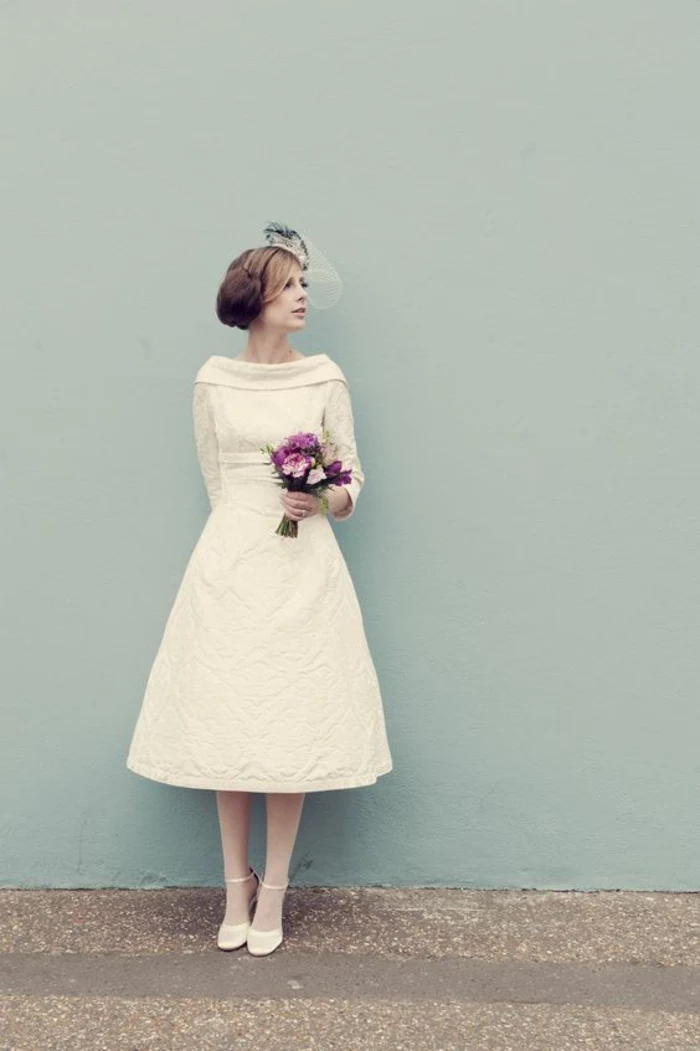
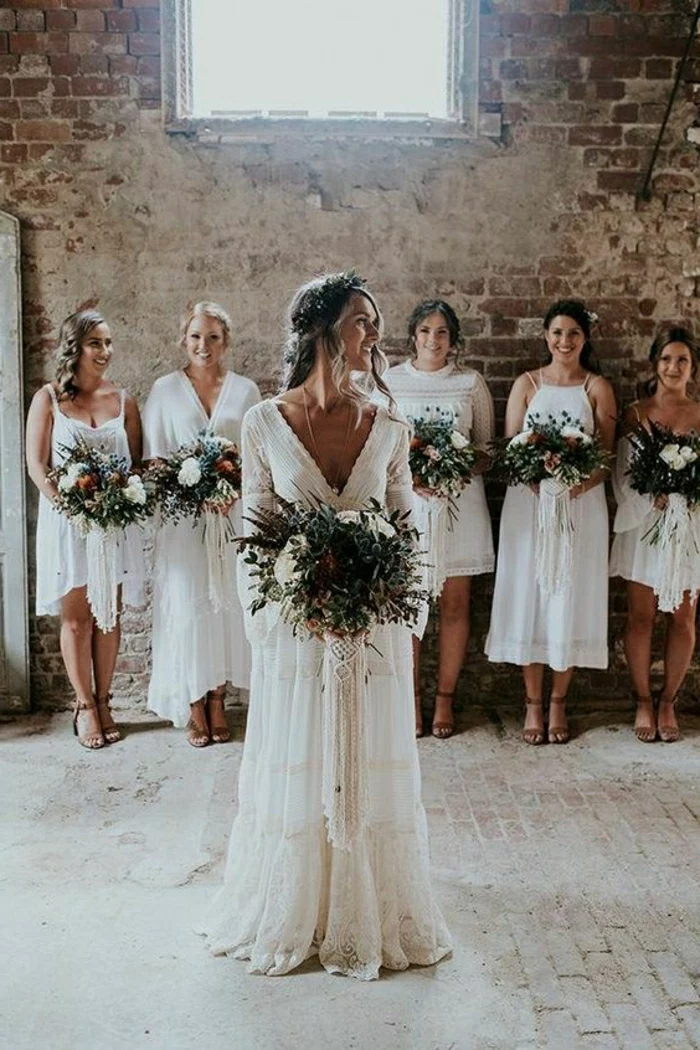
The most critical fitting is your first. This is the diagnostic session. Here, a specialist seamstress will assess the fabric’s health, analyze the seam allowances, and determine the true scope of work. This is the moment you’ll discover if your vision is achievable or if the dress’s original structure presents limitations. Go in with an open mind.
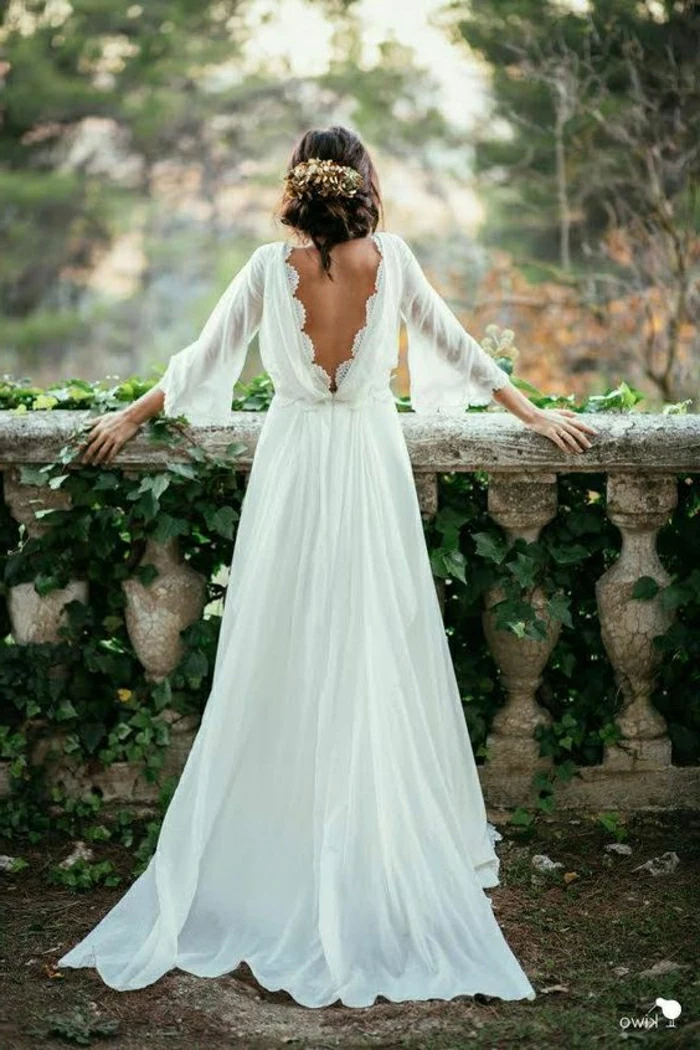
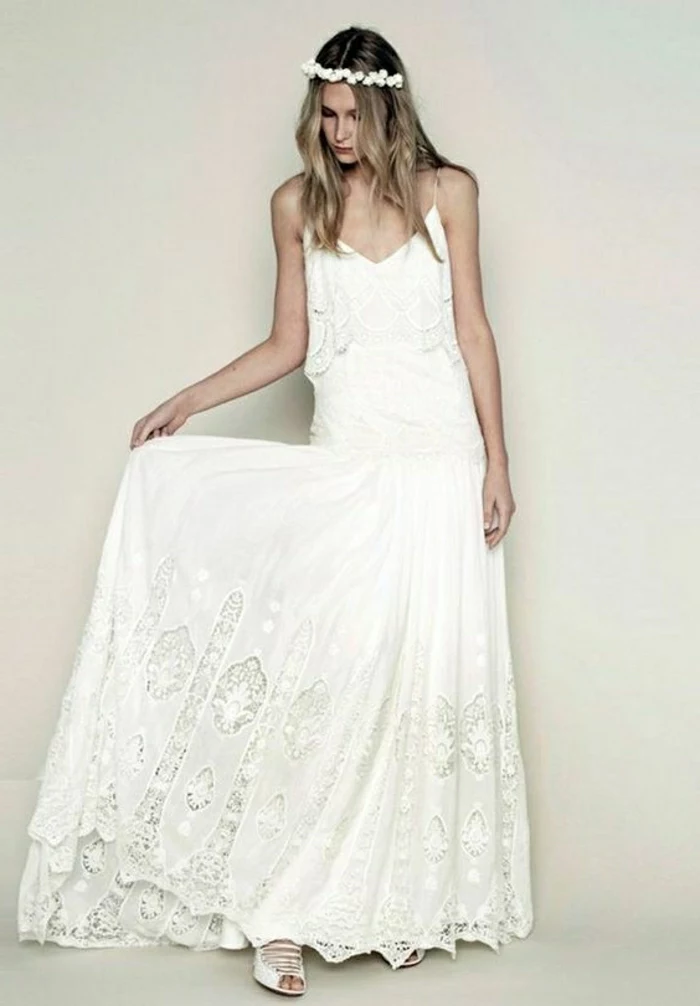
- A perfect silhouette that honors the era.
- A flawless drape without pulling or bunching.
- Comfort and confidence on your wedding day.
The key? Bring the exact shoes and undergarments you will wear on the day to every single fitting, starting with the very first one. Even a half-inch difference in heel height can change everything.
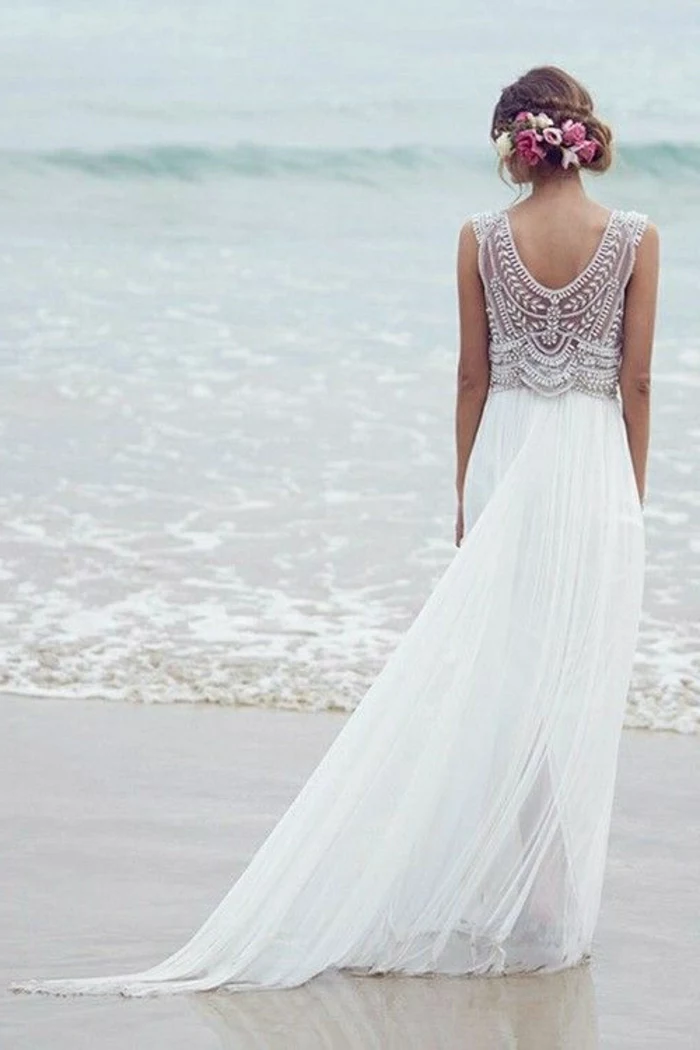
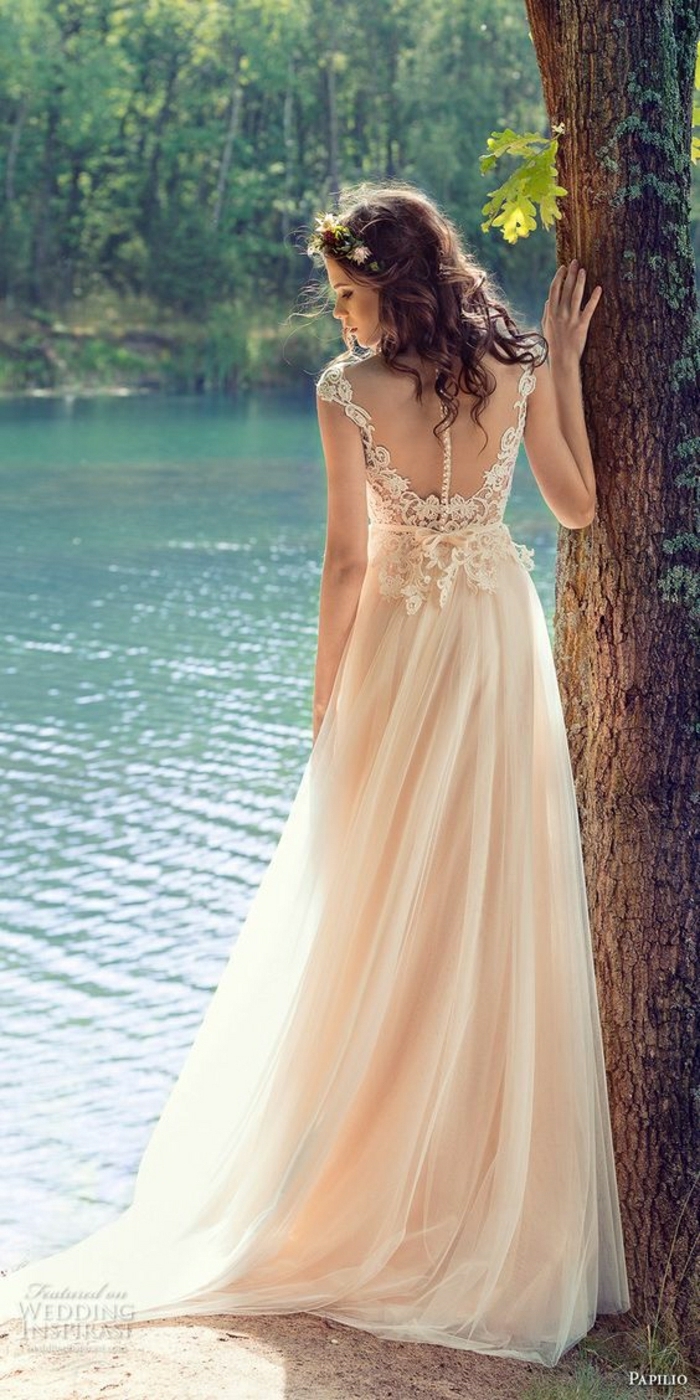
Can a vintage dress be radically changed?
Think preservation, not reinvention. A skilled artisan can often resize a dress by one or two sizes, repair beadwork, or slightly modify a neckline. However, trying to transform a 1940s sheath into a ballgown is not an alteration; it’s a deconstruction that destroys the original garment. Respect the designer’s initial vision and the dress’s historical integrity.
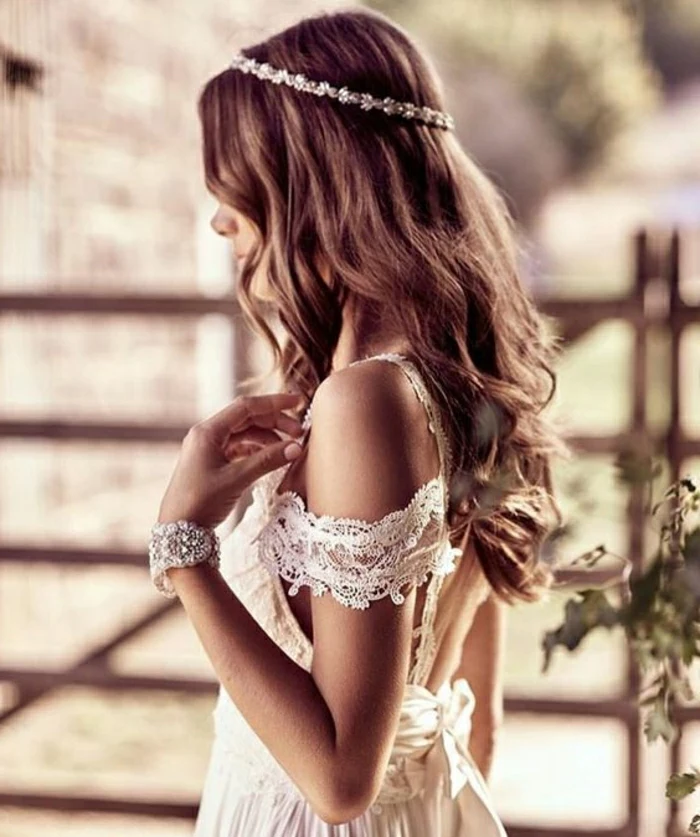
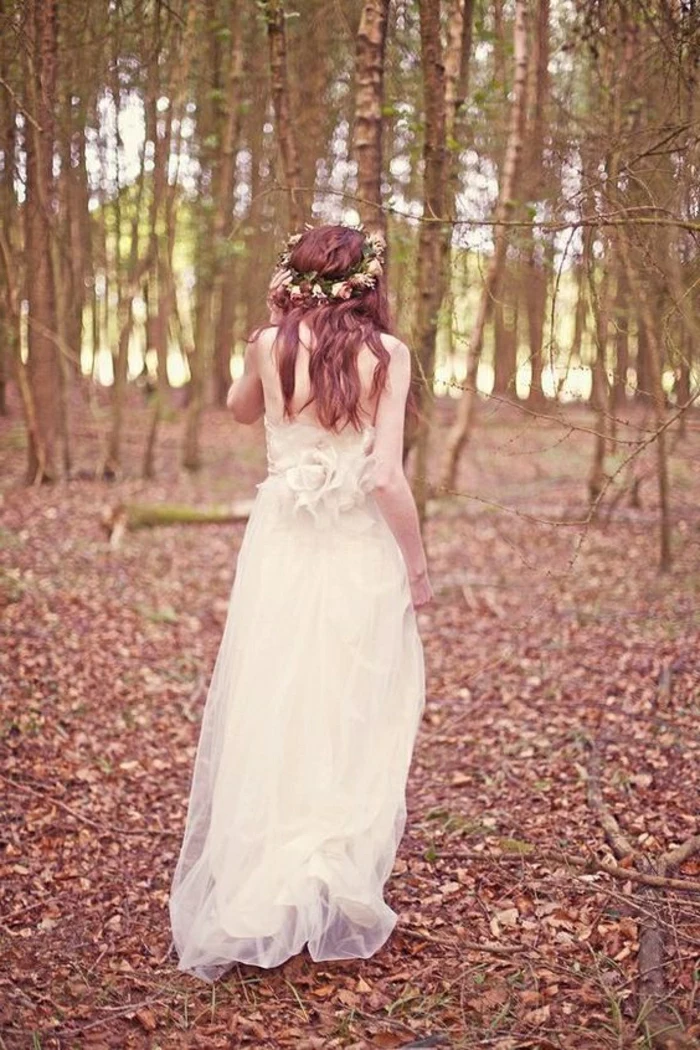
Let’s talk about lace. A 1960s dress might feature beautiful machine-made Chantilly or Alençon lace, which is relatively sturdy. An Edwardian gown, however, could be adorned with handmade Irish crochet or Battenberg lace, which is far more delicate and can be incredibly difficult—and expensive—to repair if it tears. Know your lace before you buy.
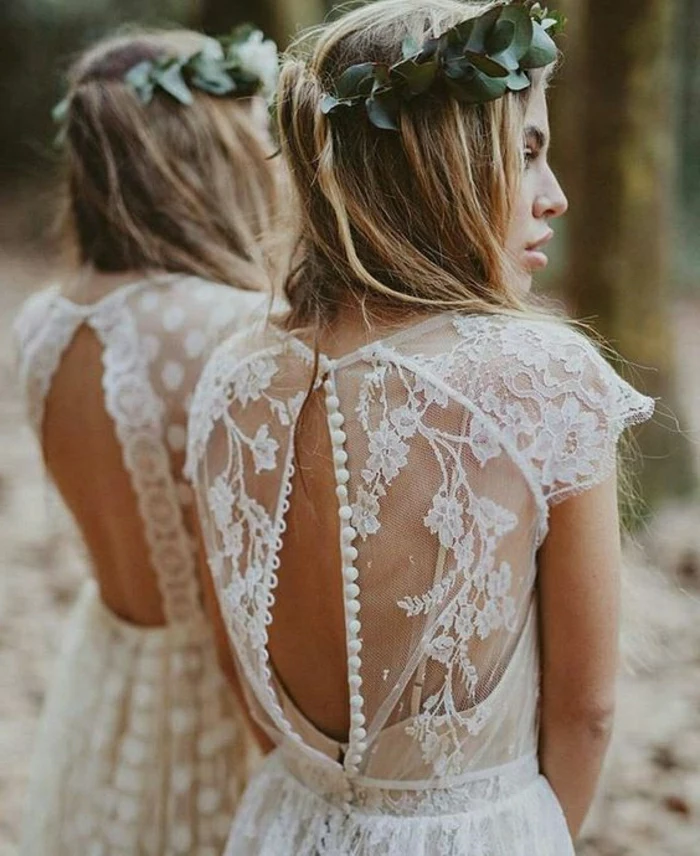
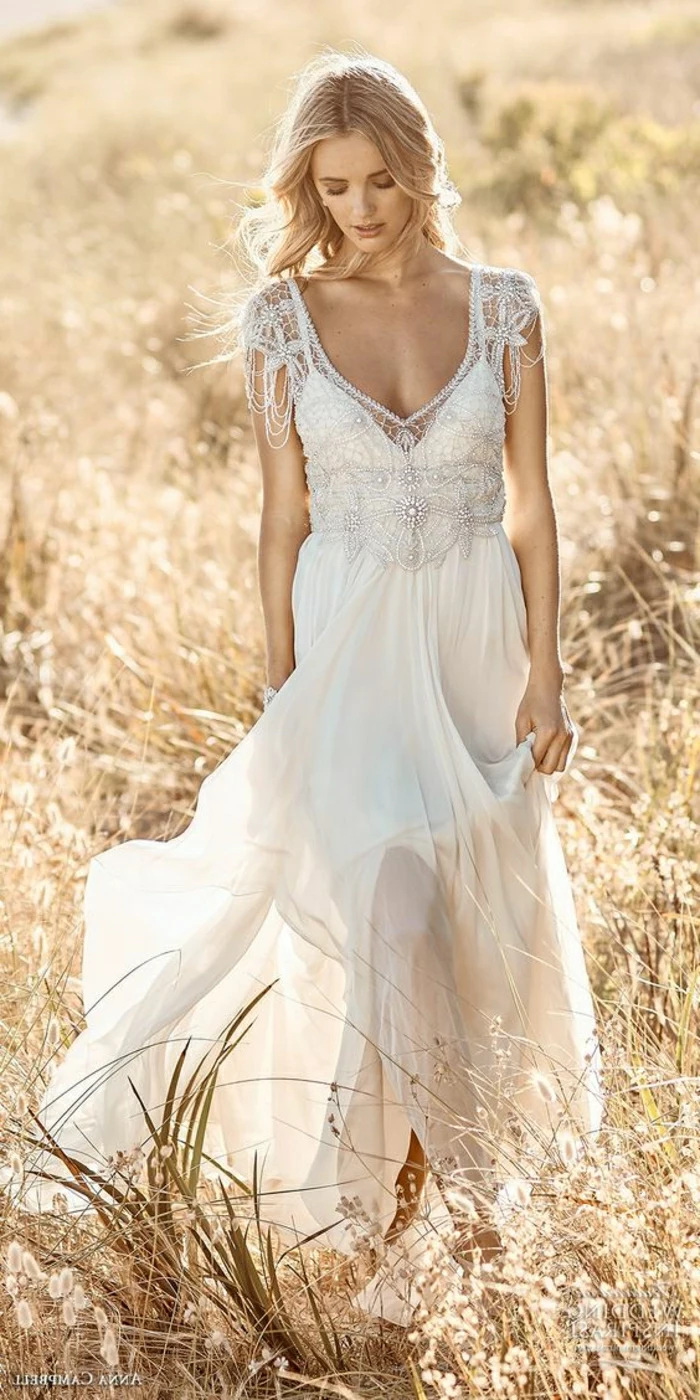
Planning for preservation is as important as planning for the wedding. Don’t just hang the dress in a closet afterward.
- Have it professionally cleaned by a service that specializes in heirloom garments immediately after the wedding.
- Ensure it’s stored with acid-free tissue paper, not plastic.
- Use a dedicated archival-quality box, like those from The Wedding Gown Preservation Co., to protect it from light, humidity, and pests.
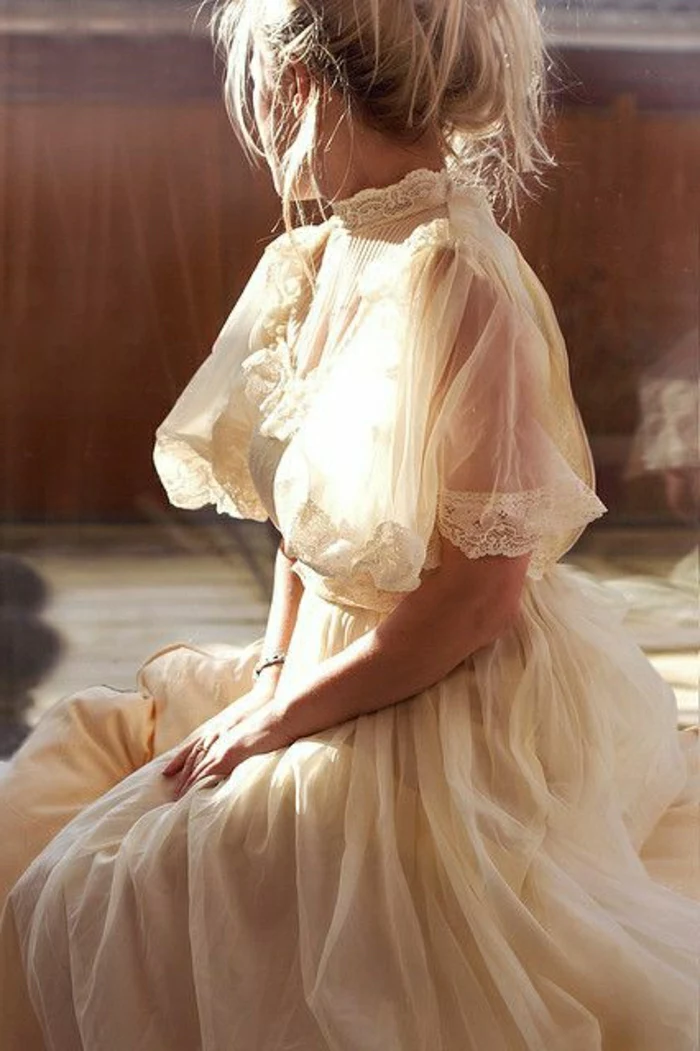
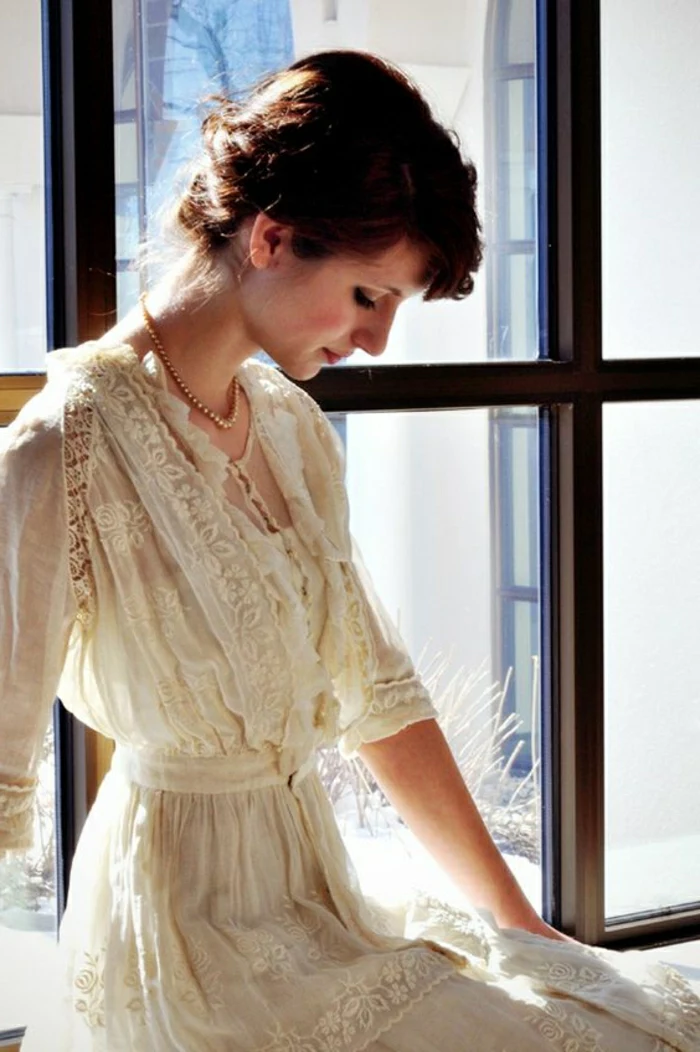
Online Marketplace (Etsy, 1stDibs): Offers a vast, global selection and the thrill of the hunt. The risk is that you can’t assess the dress’s condition, smell, or true color in person, and returns can be complicated.
Specialty Boutique (e.g., Happy Isles in L.A., Mill Crest Vintage in N.J.): Provides expert curation and in-house knowledge. You can touch the fabrics and try things on, but your selection is limited to their collection and prices may be higher.
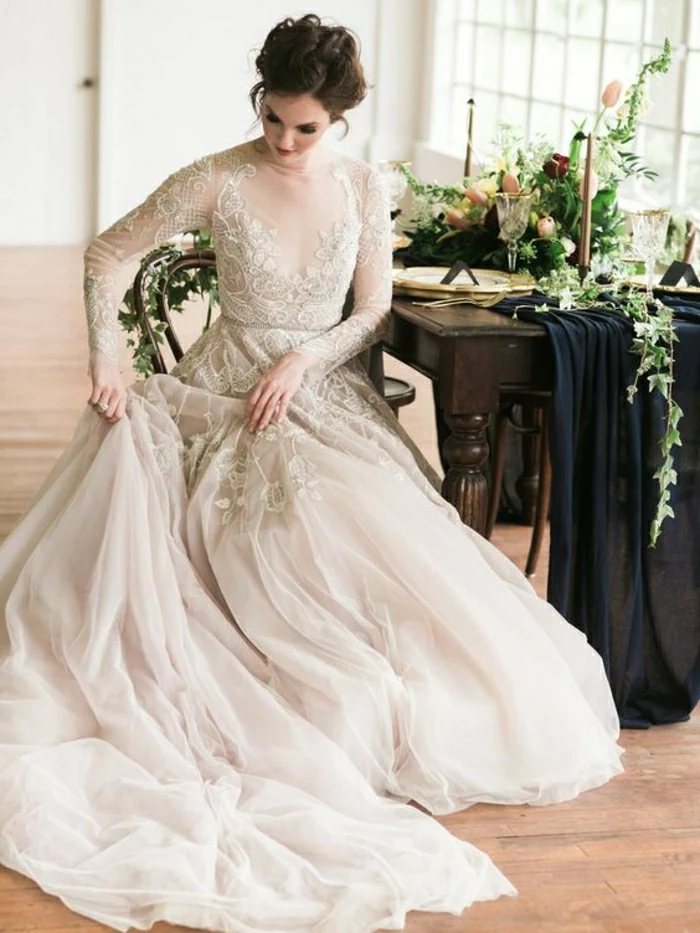
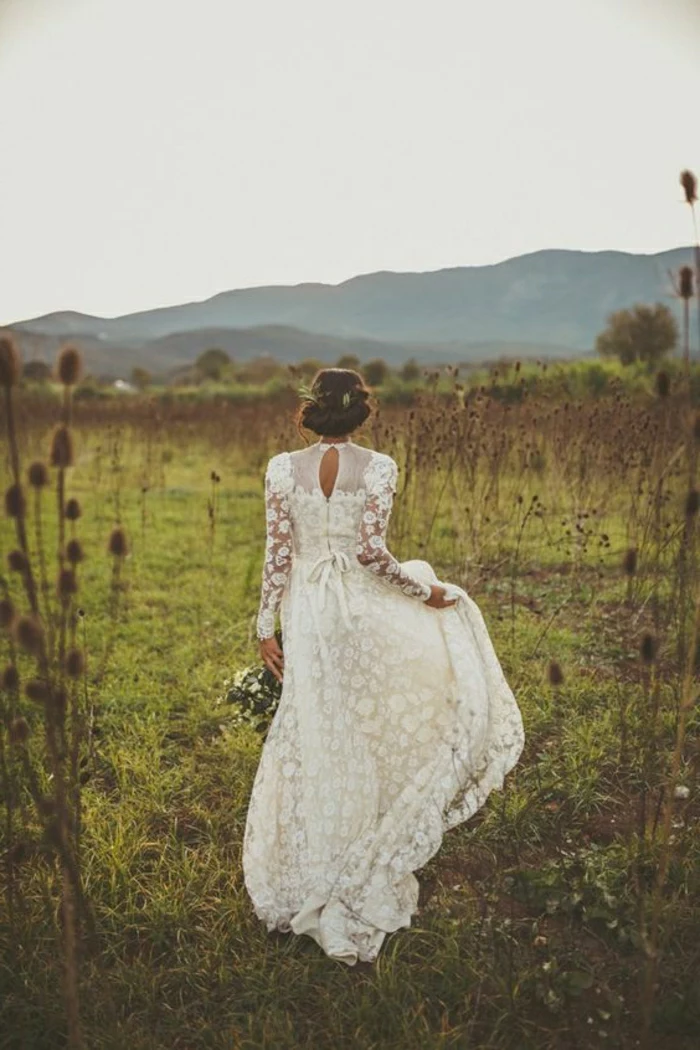

- For a 1920s look: A crystal or pearl headpiece (a ‘bandeau’), T-strap heels, and long beaded necklaces.
- For a 1950s tea-length: A birdcage veil, short gloves, and classic pearl studs.
- For a 1970s bohemian dress: A flower crown, platform sandals, and turquoise jewelry.
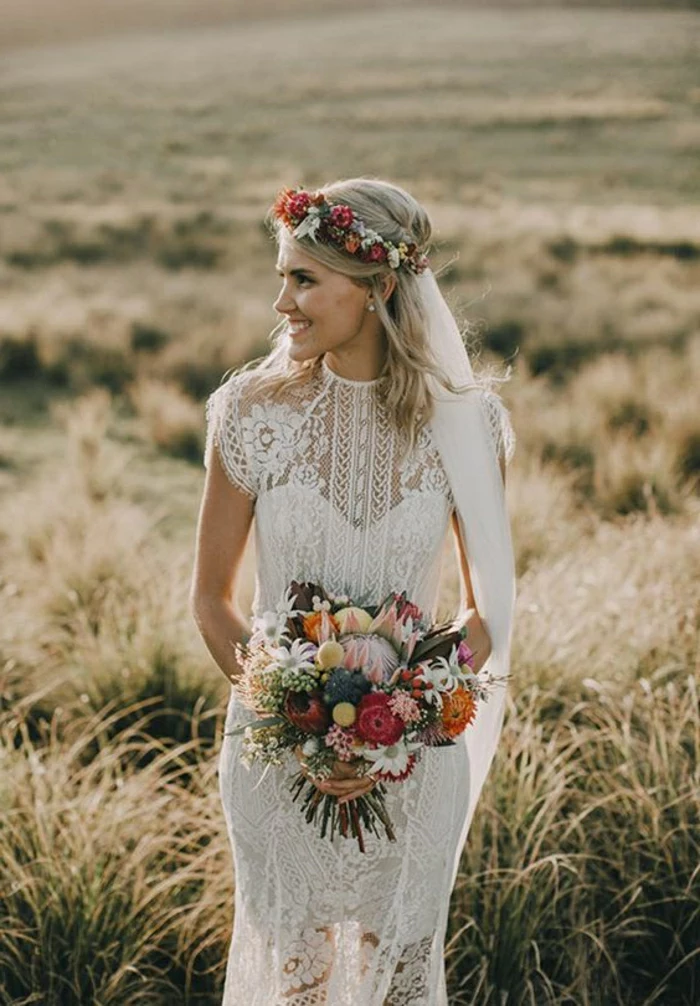
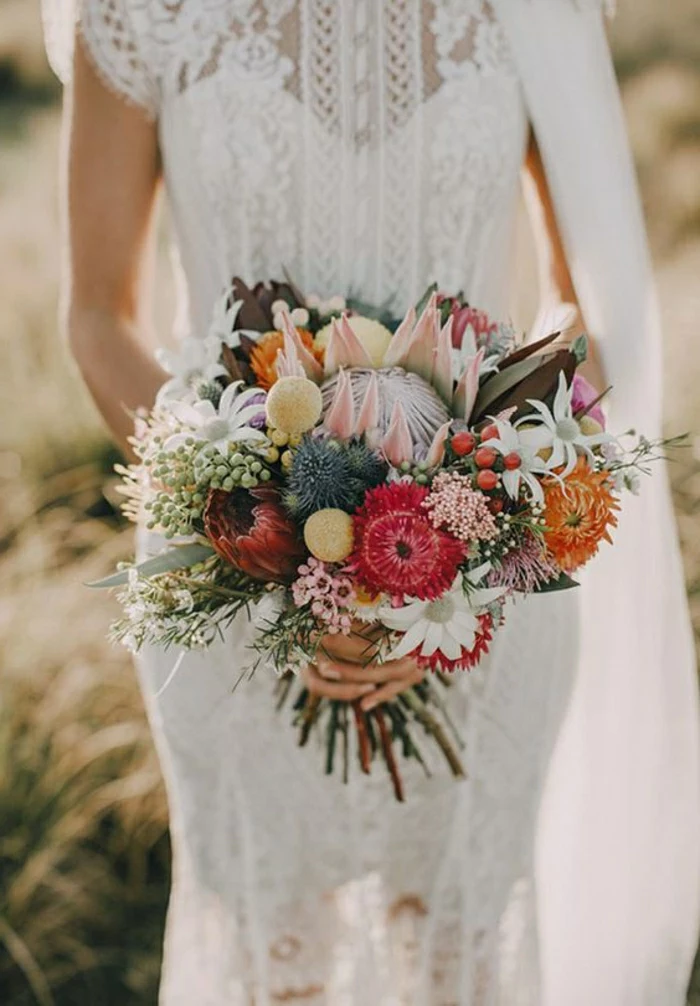
If your dream dress is from a specific iconic look, like Grace Kelly’s 1956 masterpiece, remember it was couture—custom-made for her body with near-unlimited resources. A vintage dress ‘from that era’ will have a similar aesthetic but was made for a real person’s body and budget. Chasing an exact replica can lead to frustration; aim for the spirit and style instead.
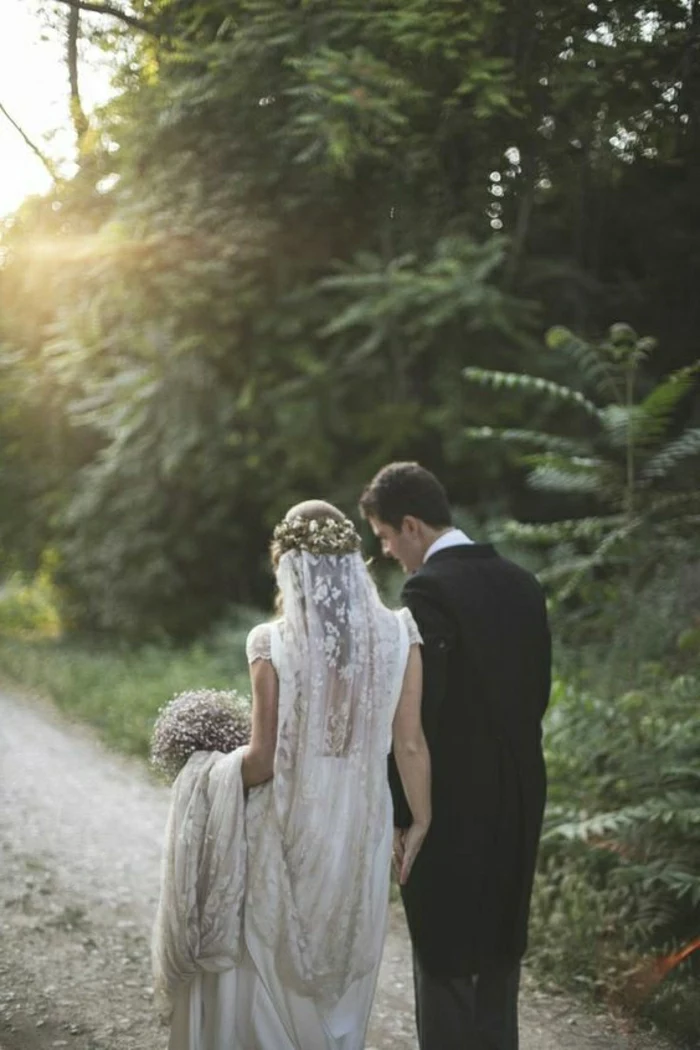
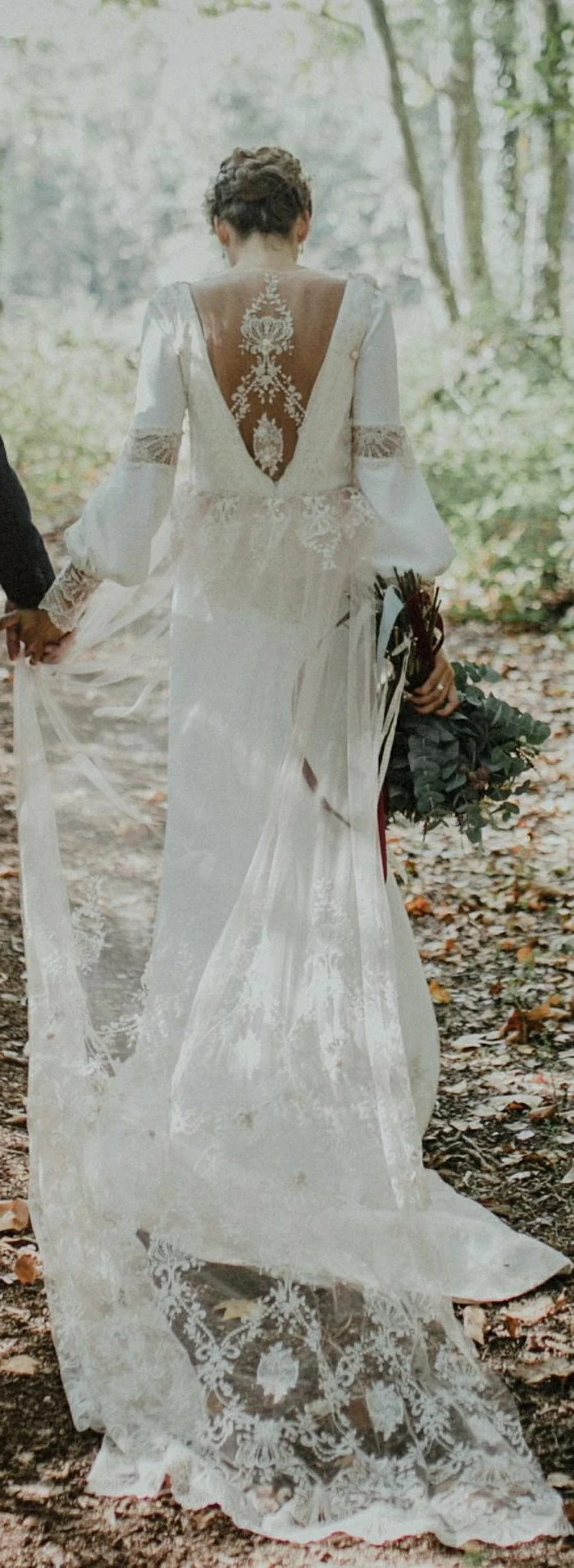
Never, ever check a vintage wedding gown in your luggage. It’s irreplaceable.
Always transport it as a carry-on, preferably in a breathable garment bag. Politely ask the flight attendants if they have a closet where it can be hung. If not, lay it carefully in an overhead bin on top of other soft items. The risk of loss or damage is simply too great.
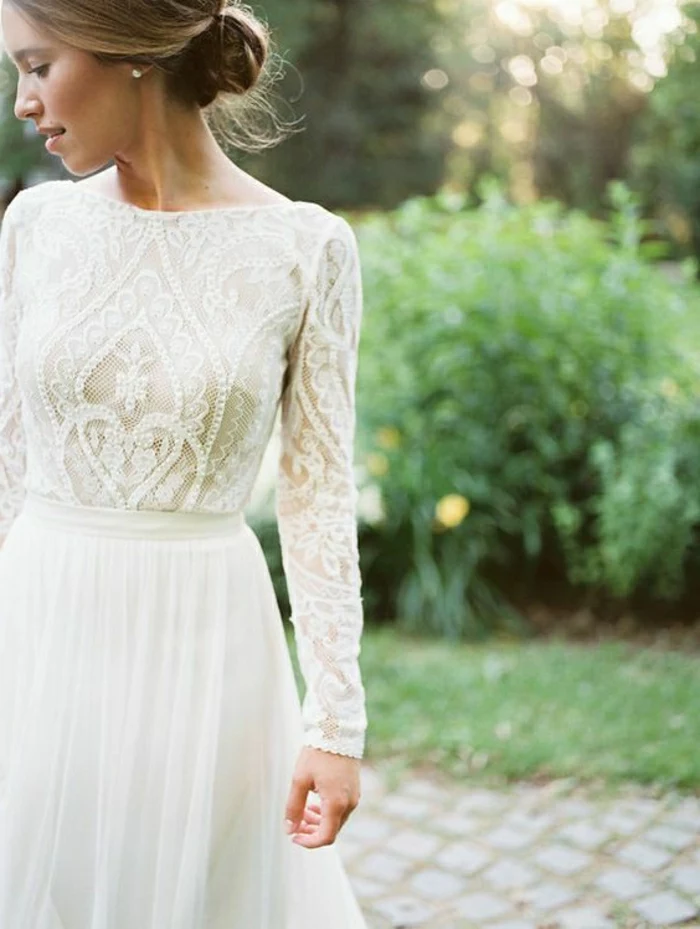
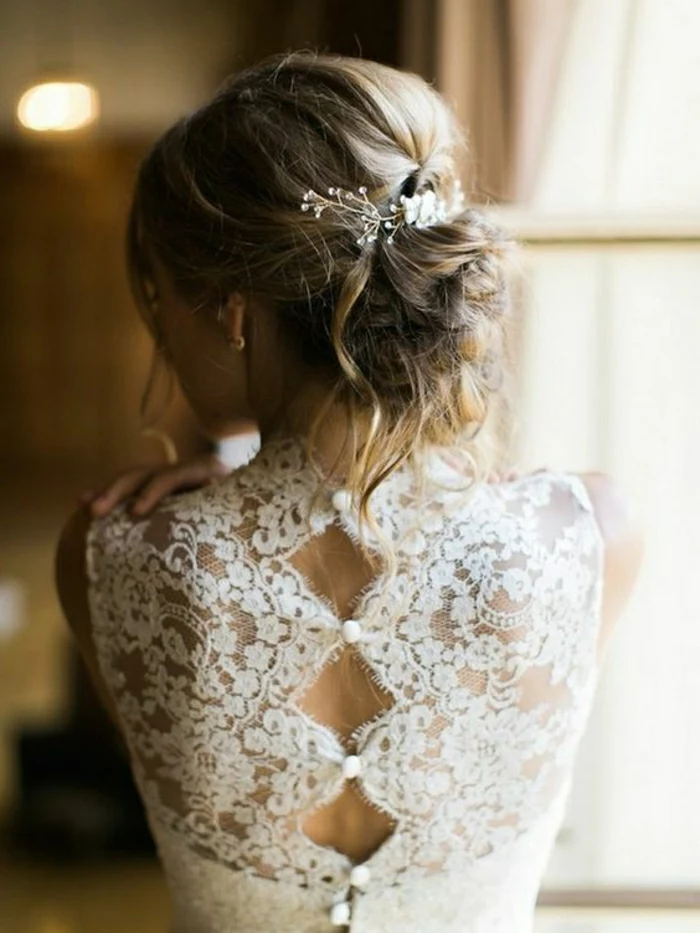
A crucial budget rule: your alterations budget should be, at minimum, 50% of the dress’s purchase price. For heavily beaded or delicate gowns, it’s safer to budget 100% or even more. The most beautiful gown can hide thousands of dollars worth of restoration work, from re-securing beads to rebuilding fragile seams.
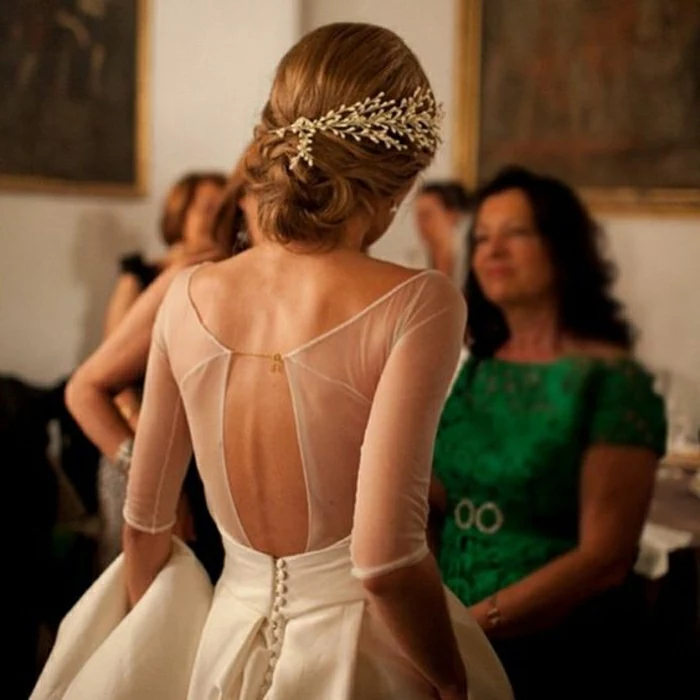
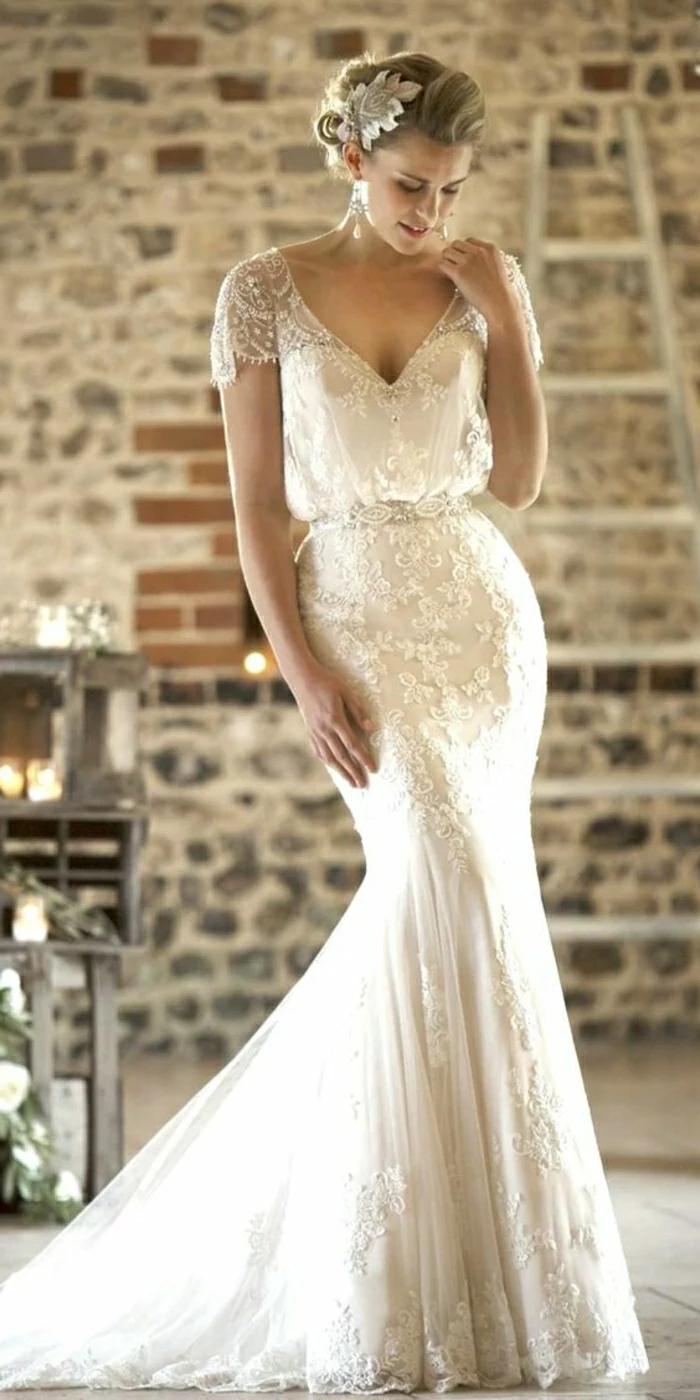
The zipper can be a clue to a dress’s age. While invented earlier, metal zippers only became common on dresses in the late 1930s and were often placed on the side. The centered back zipper became the standard much later. An older dress with a plastic zipper has likely been altered at some point in its life.
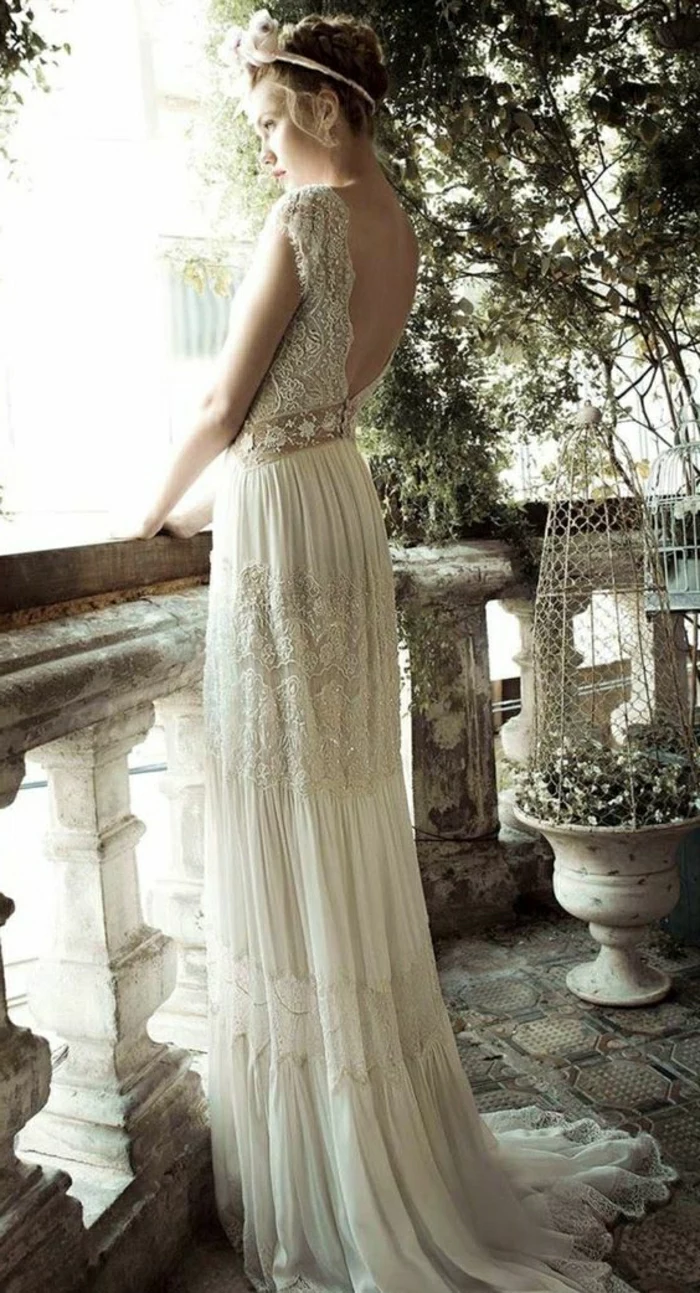
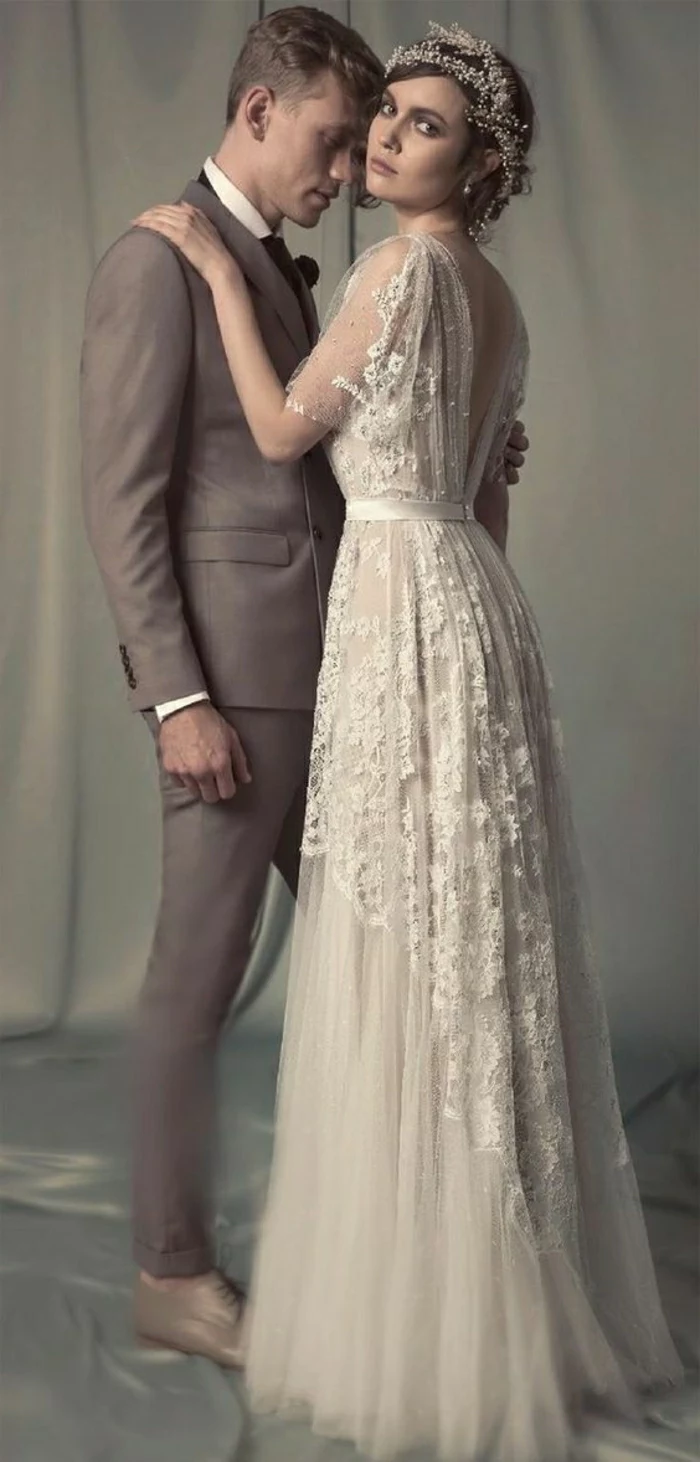
Can I just wear a modern bra?
Probably not. Modern bras are designed to create a rounded, uplifted shape that is often at odds with the silhouette of vintage dresses. A 1940s gown needs a pointier, less separated bust line, while a 1920s dress requires a flattened chest. Investing in period-appropriate foundation wear from brands like Rago or What Katie Did is essential for an authentic look.
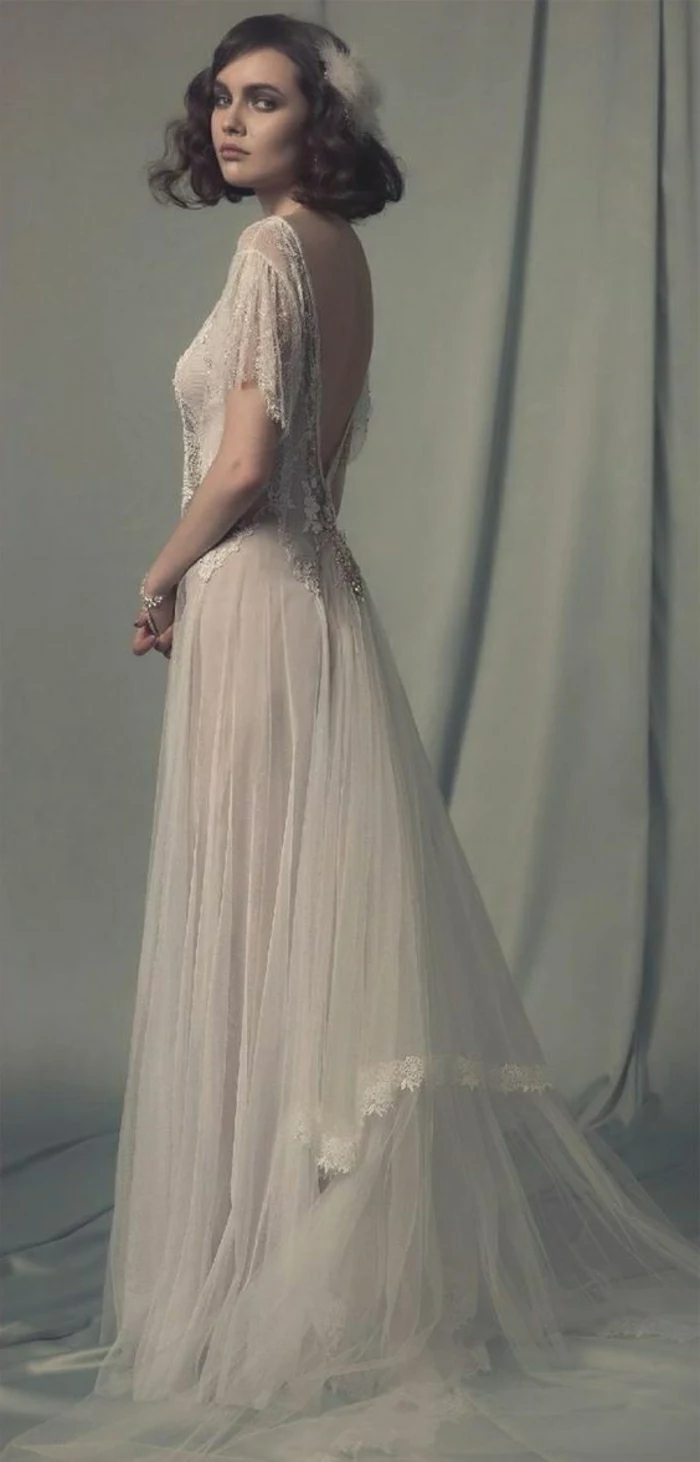

A word on sleeves. For many vintage gowns, especially from the 1930s-1950s, the armscye (the hole where the sleeve attaches to the bodice) is cut significantly smaller and higher than in modern clothing. This is often the most difficult part of a dress to alter, as there’s rarely enough seam allowance to work with. Always ensure you have comfortable room for movement in the shoulders and arms.
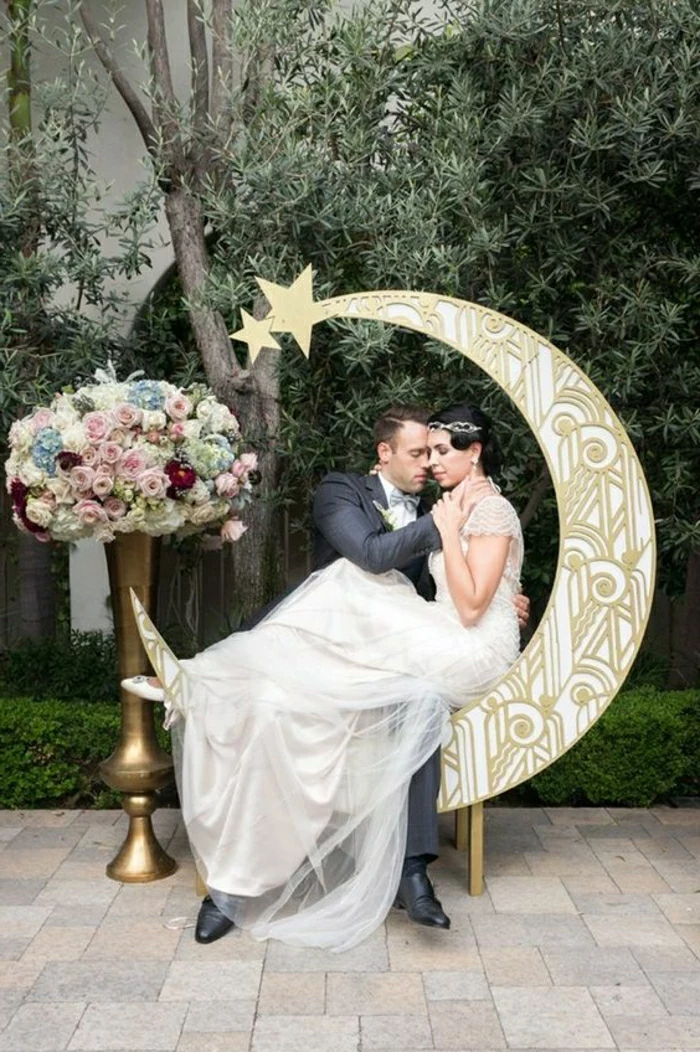
True vintage is the ultimate in sustainable fashion. By choosing a pre-existing gown, you are producing zero new waste and giving a beautiful object a new chapter in its life.

